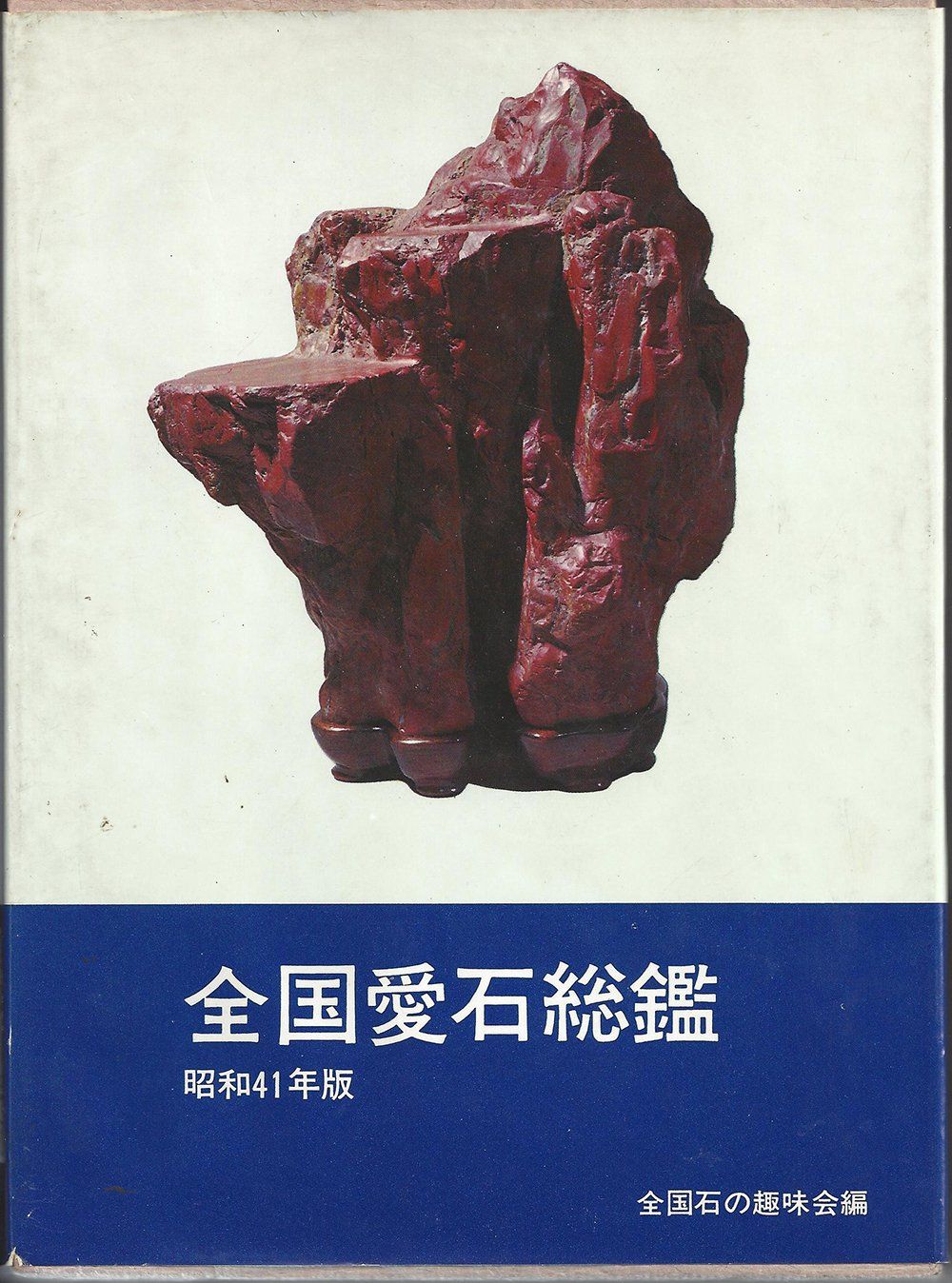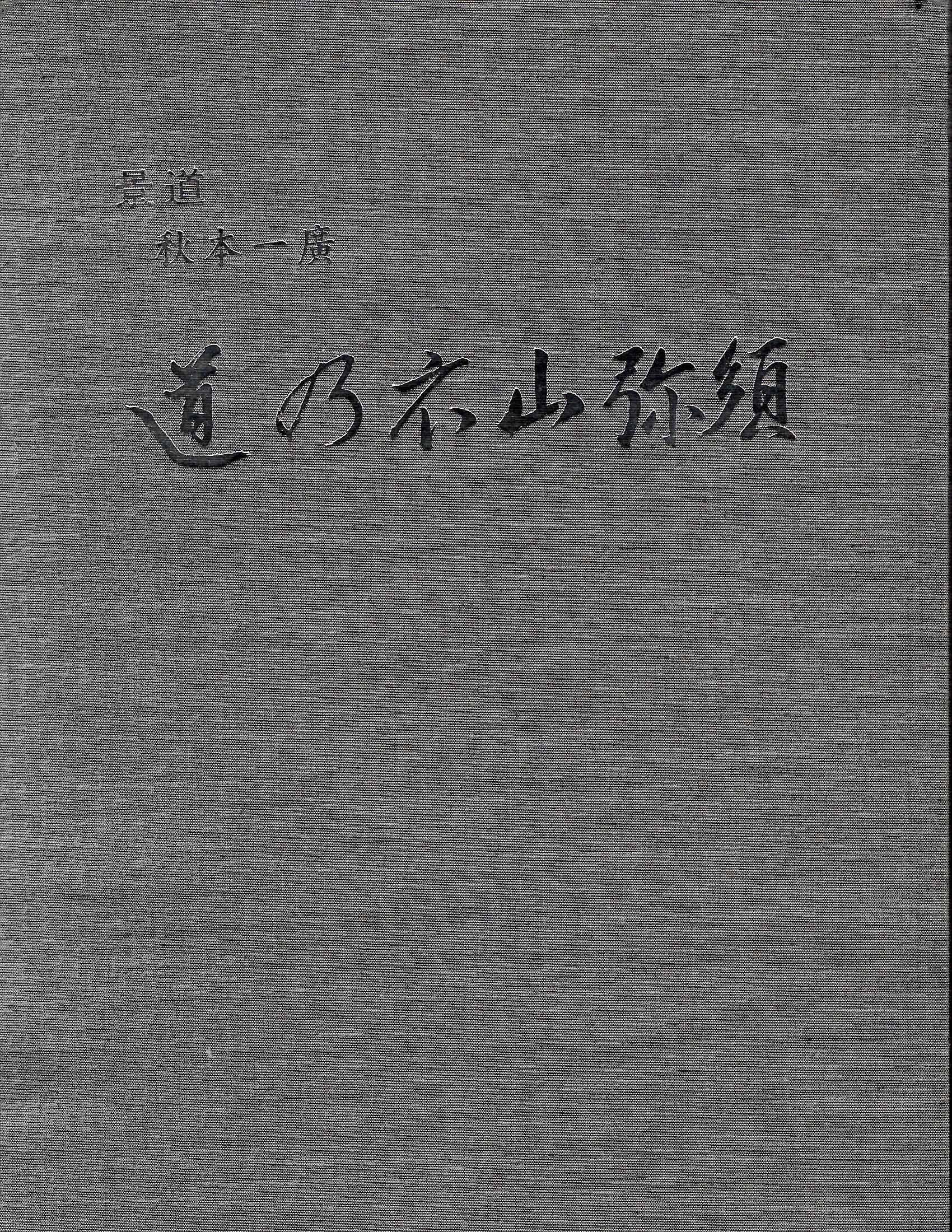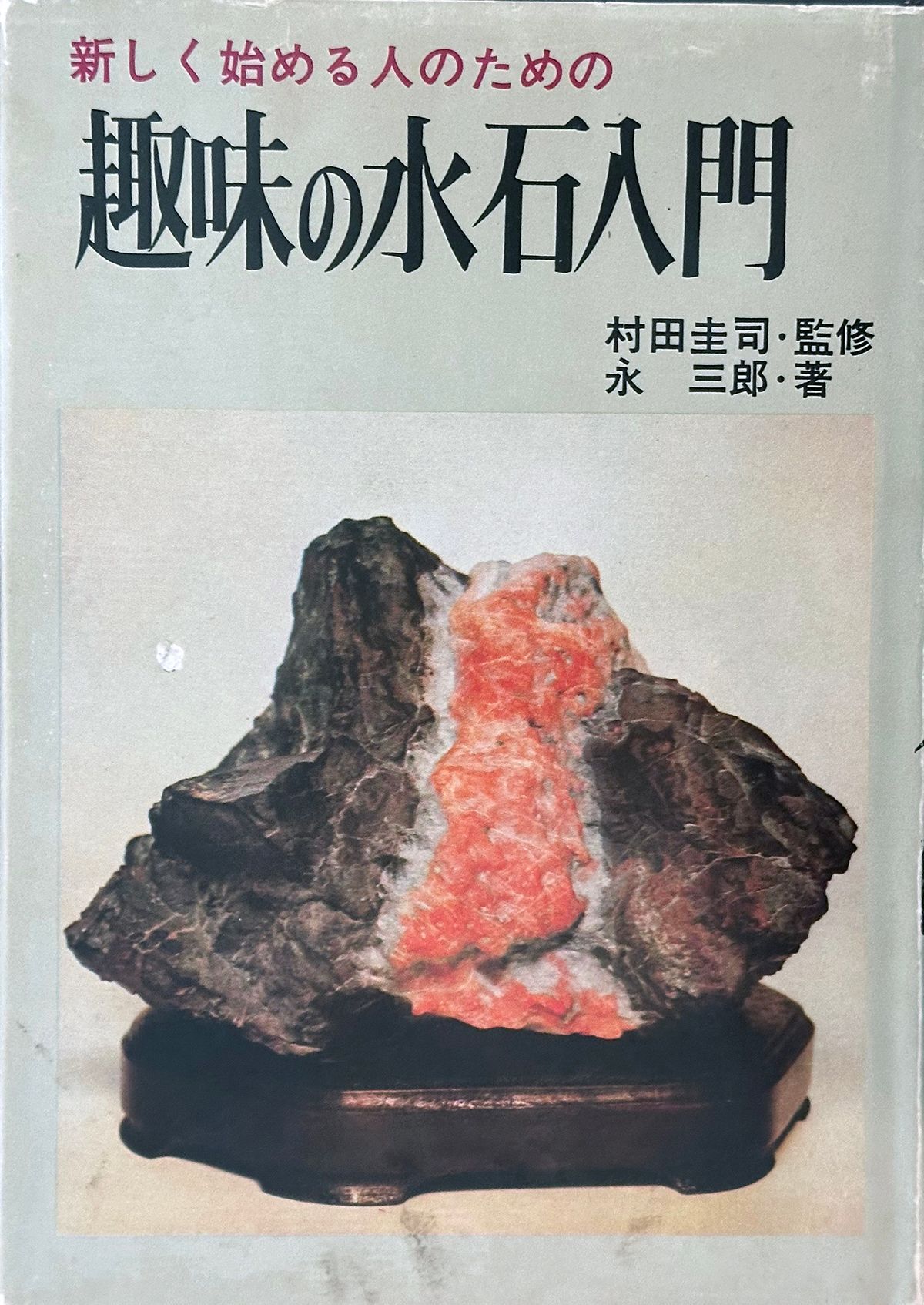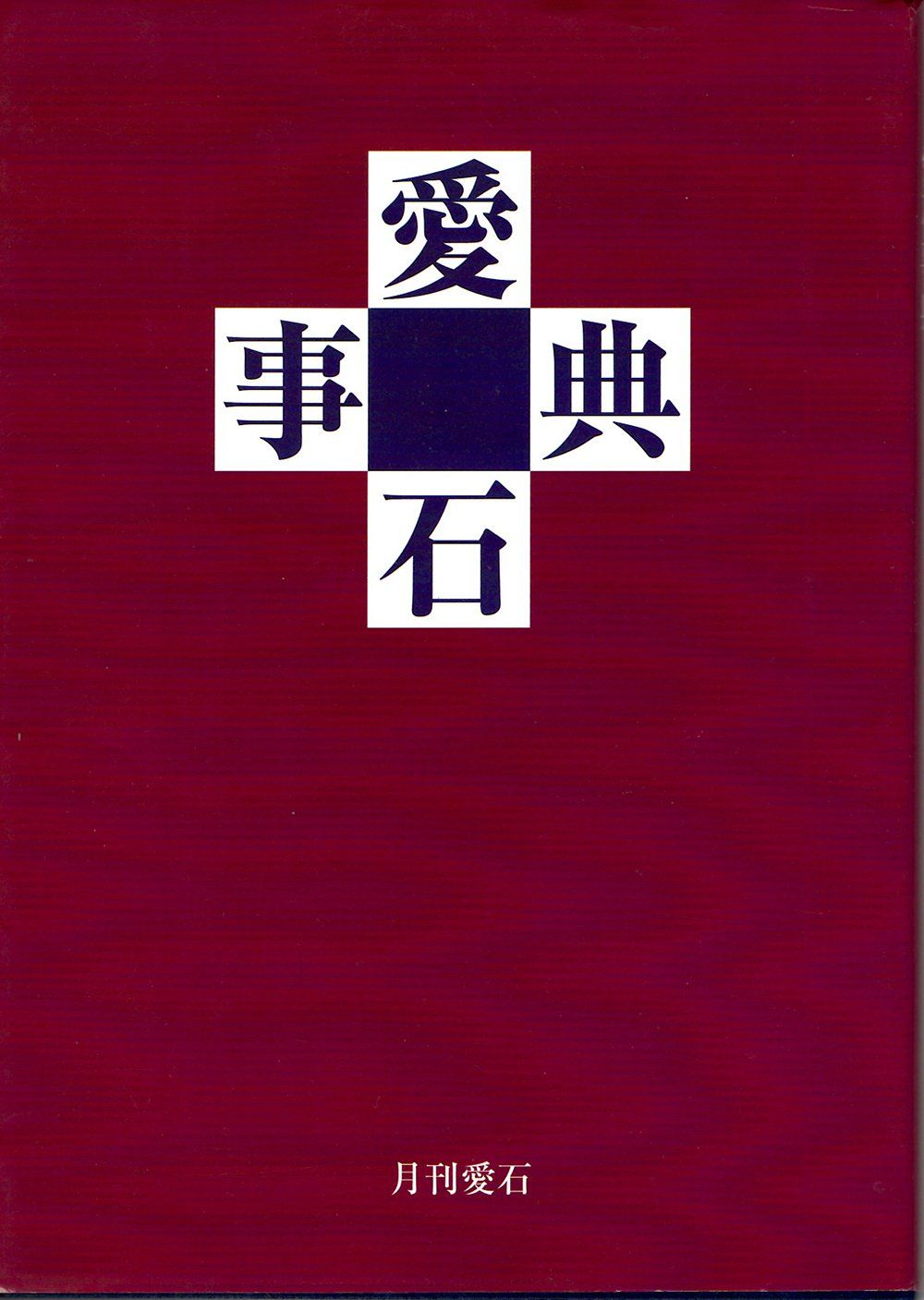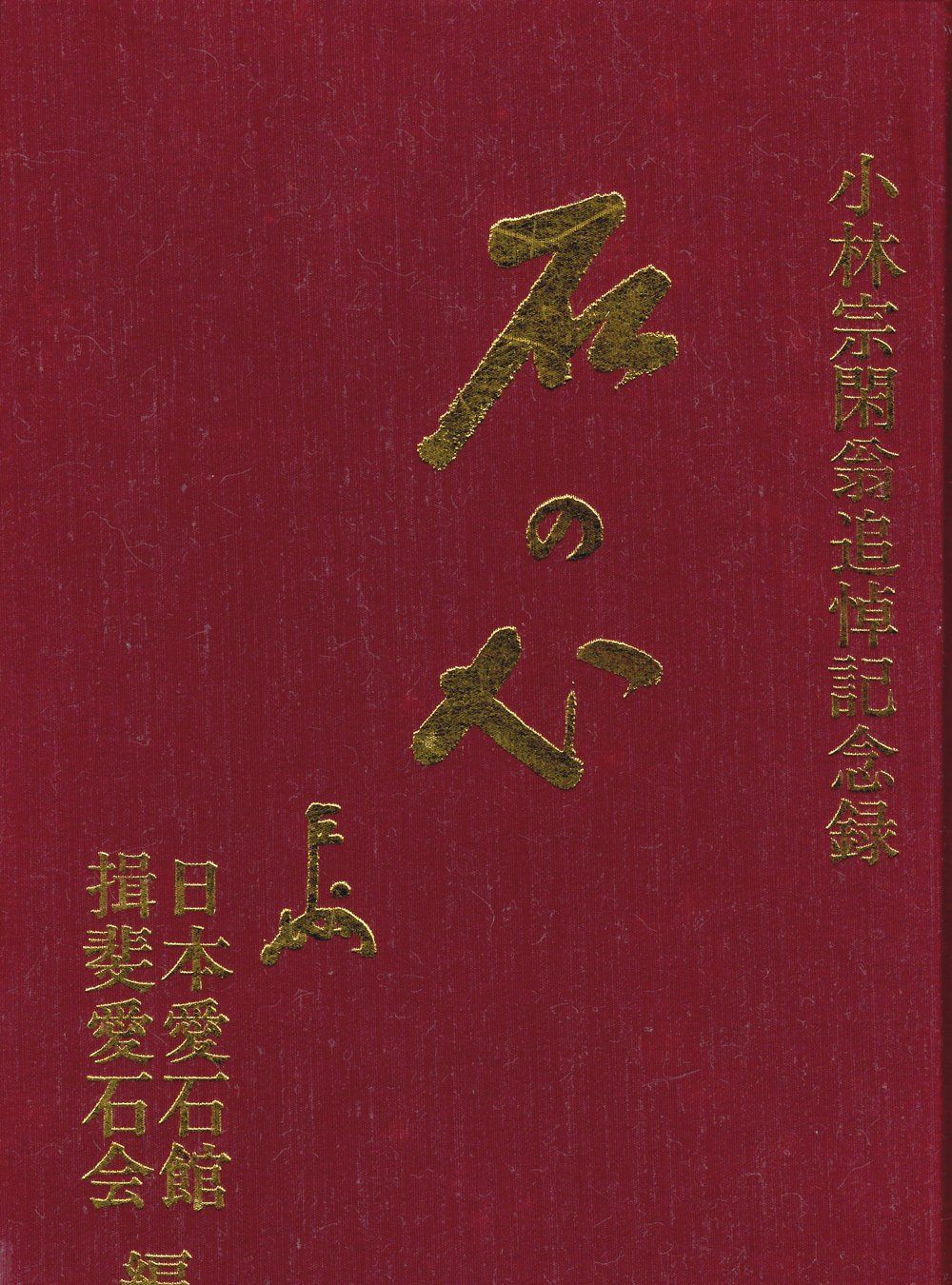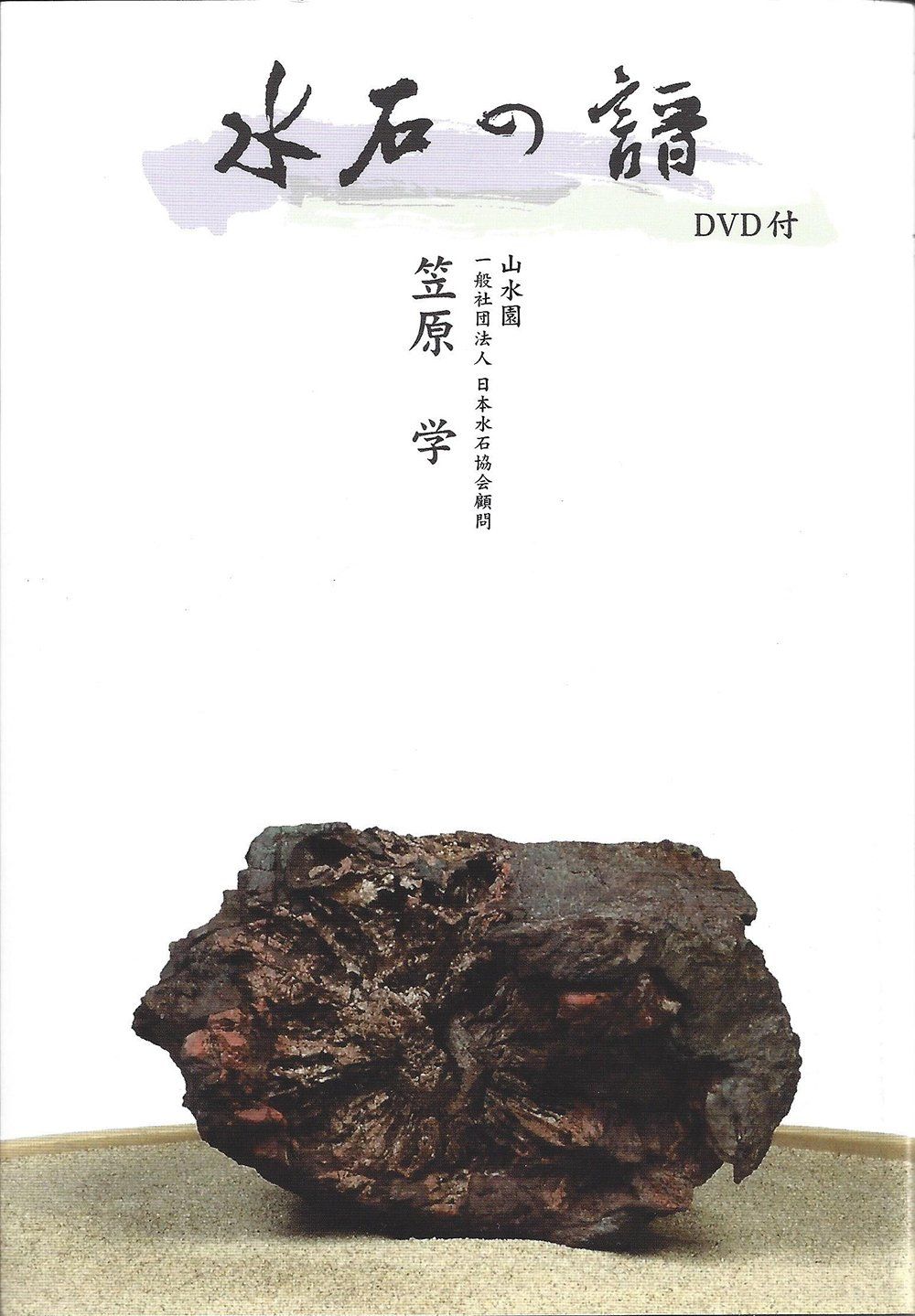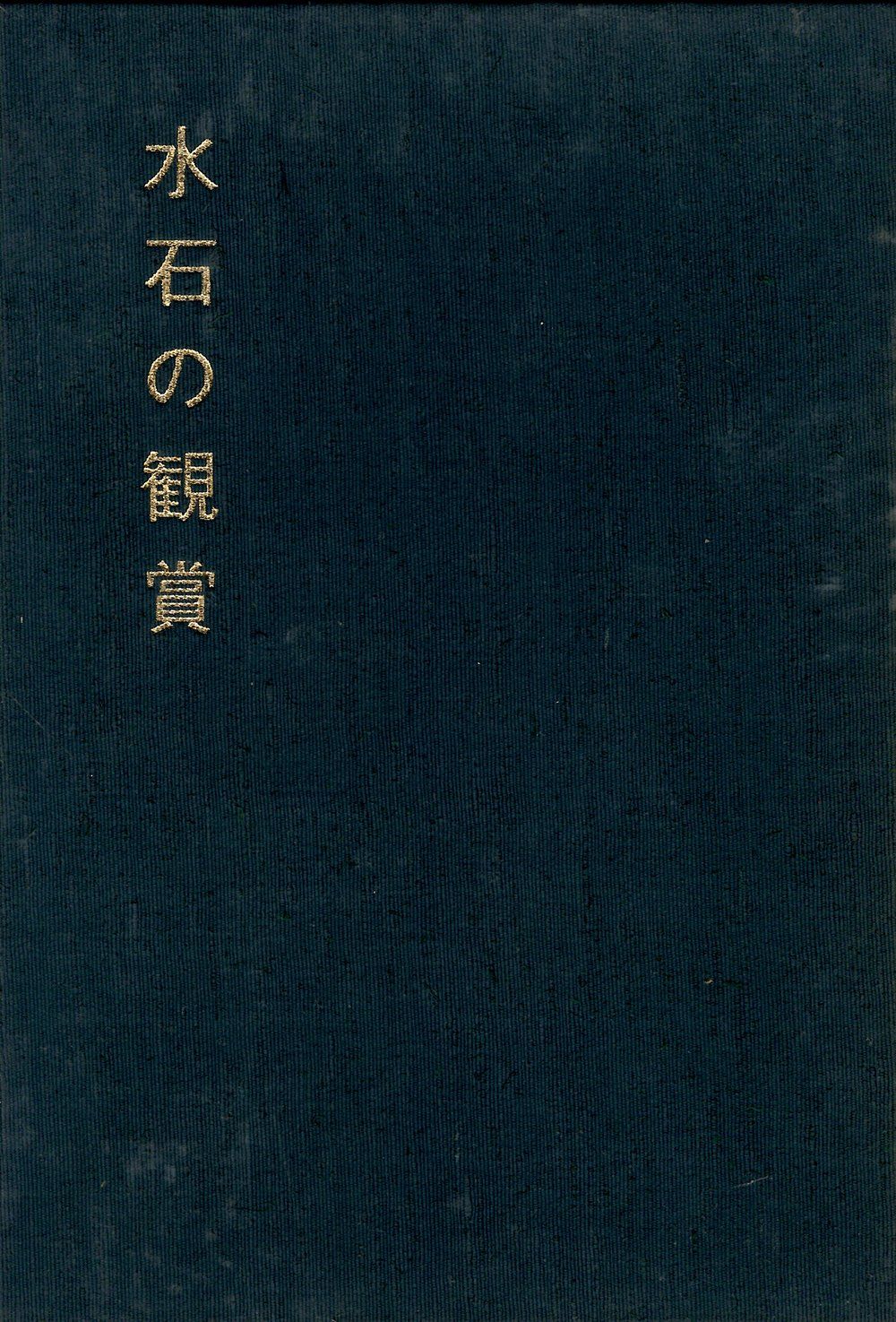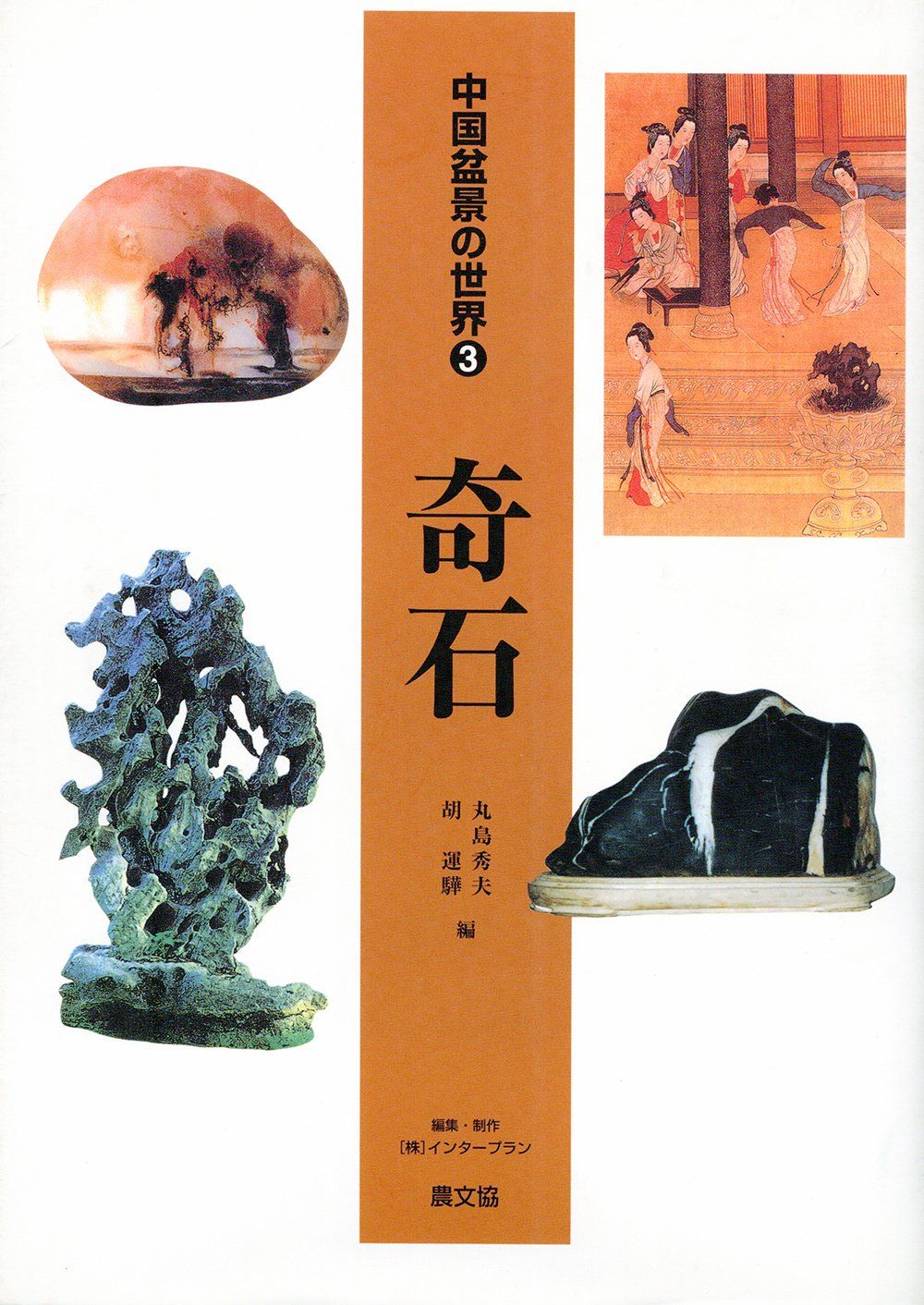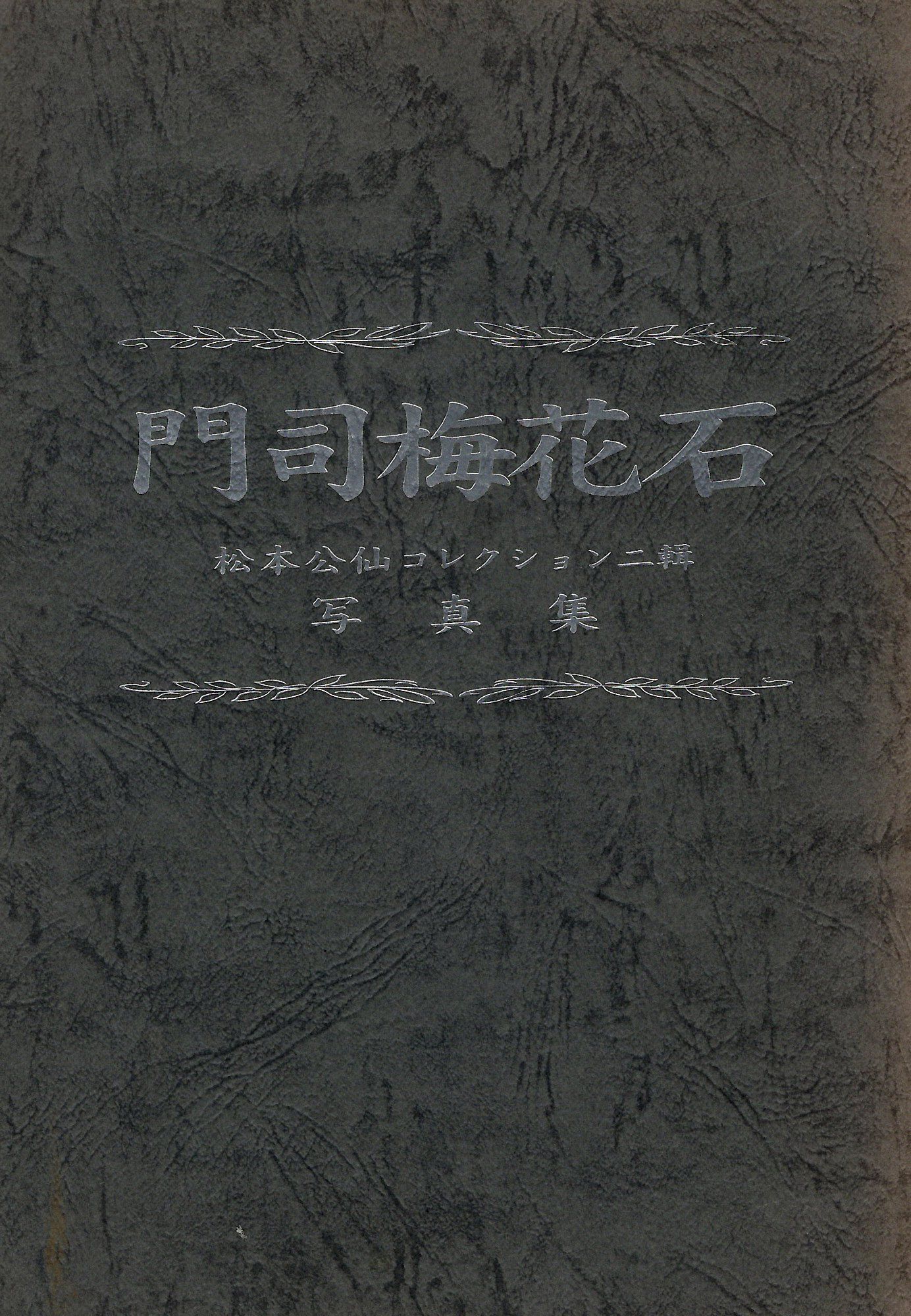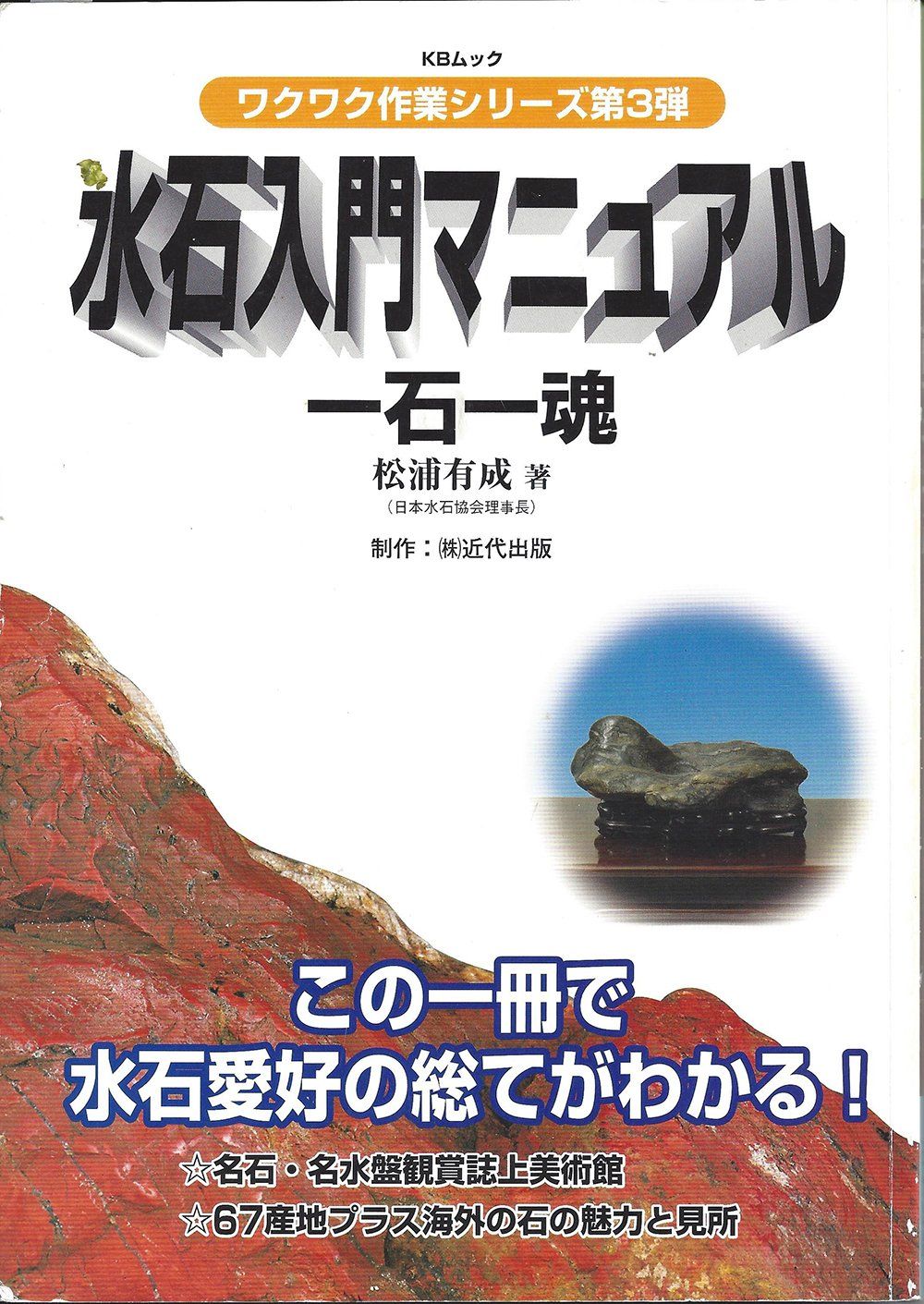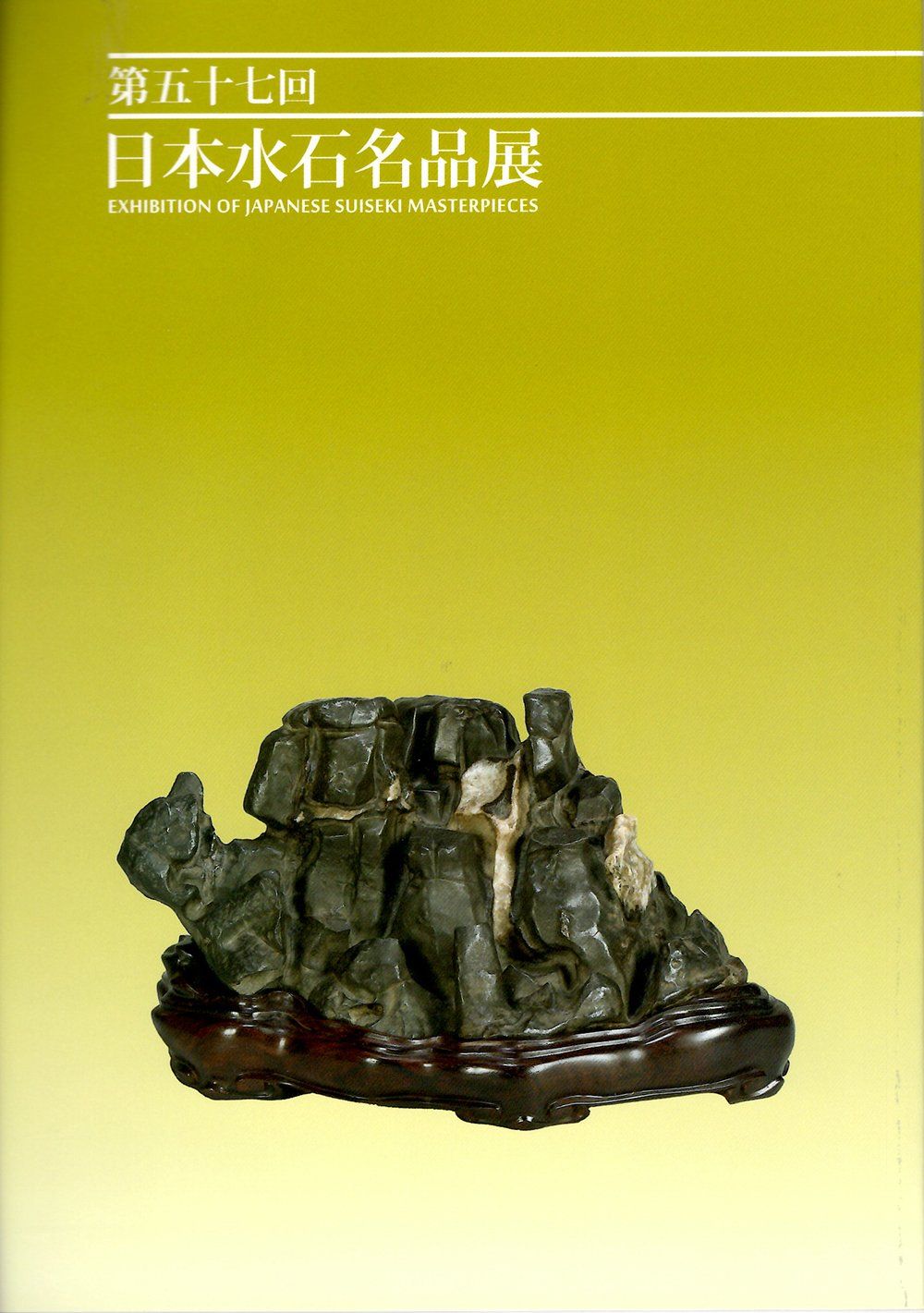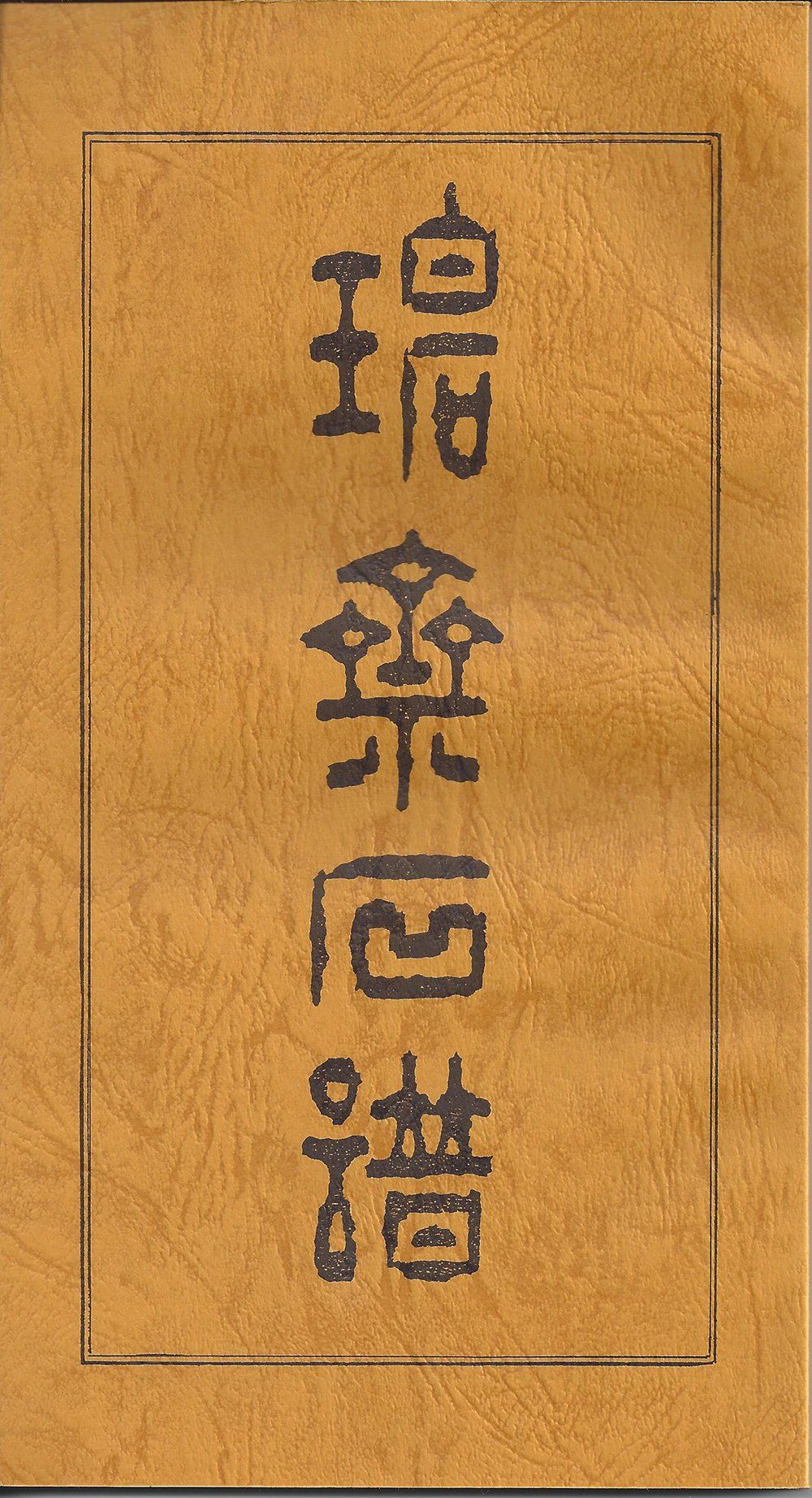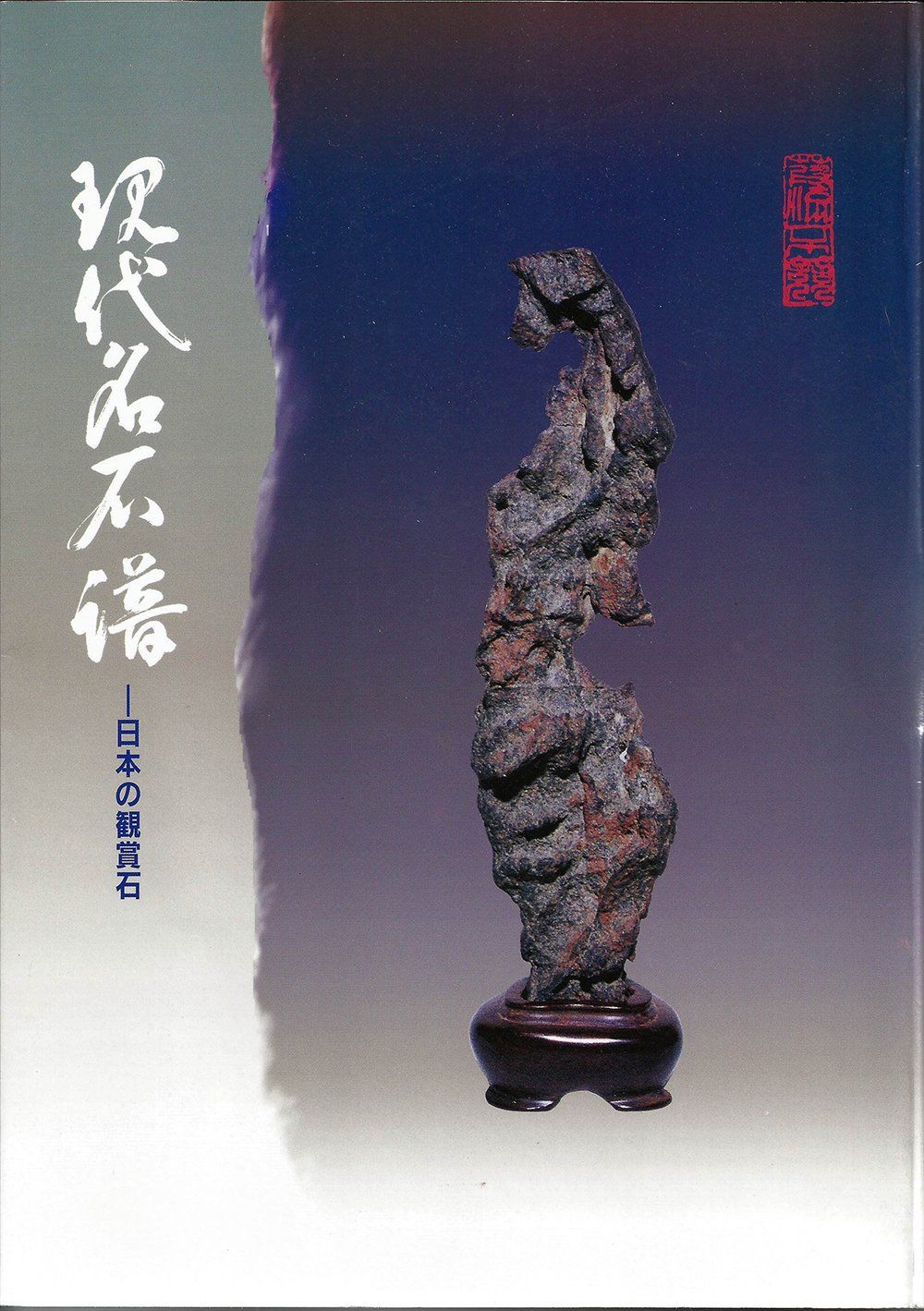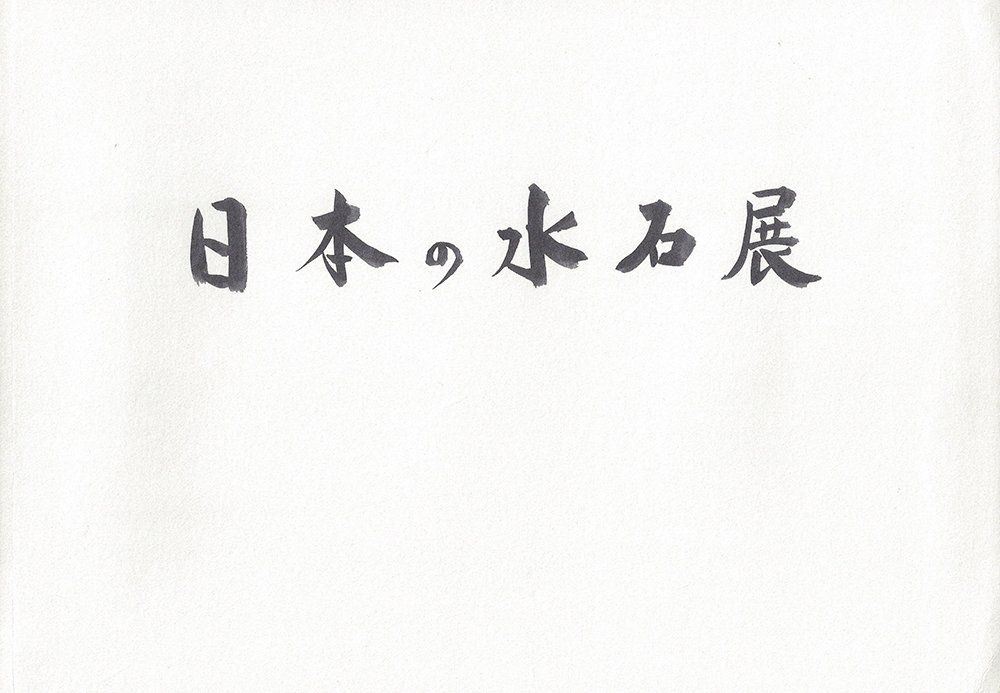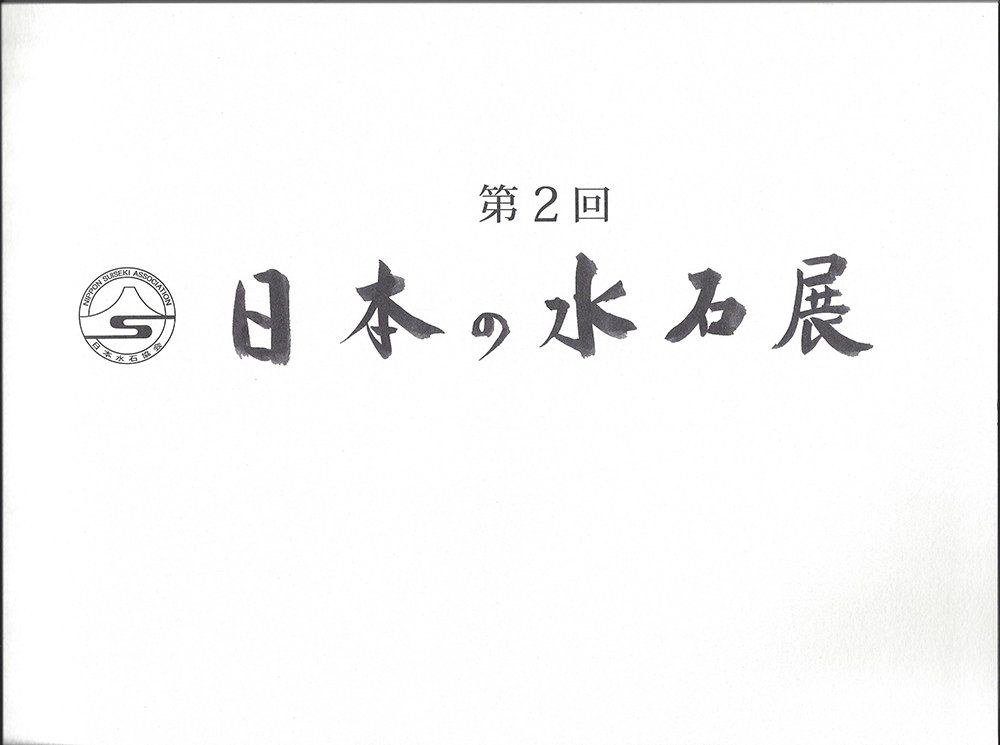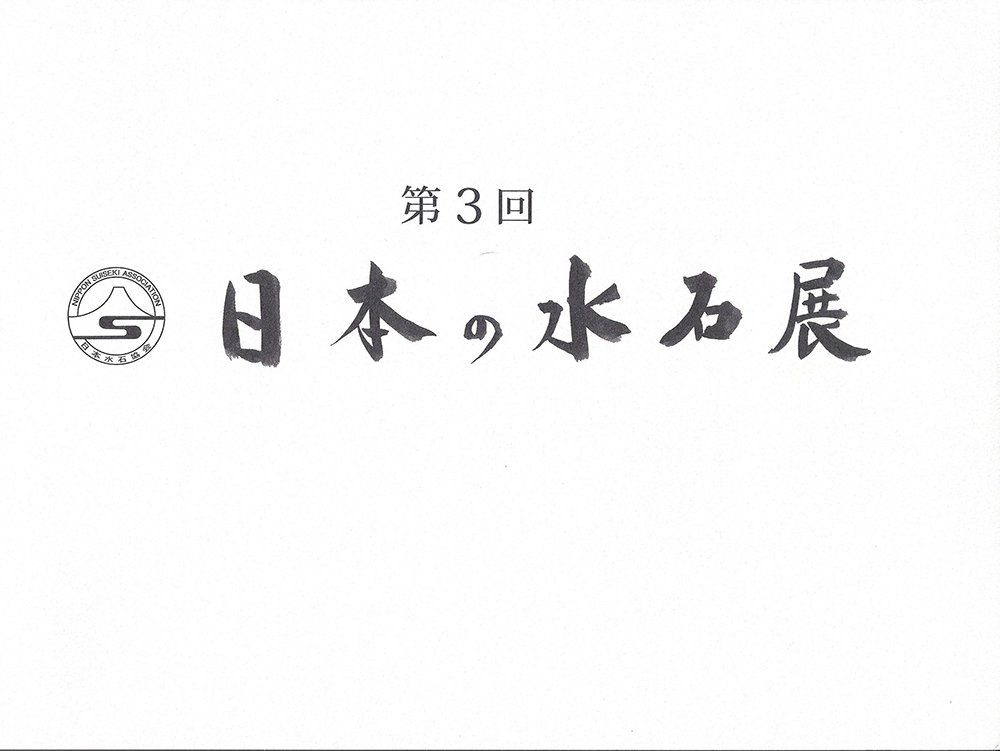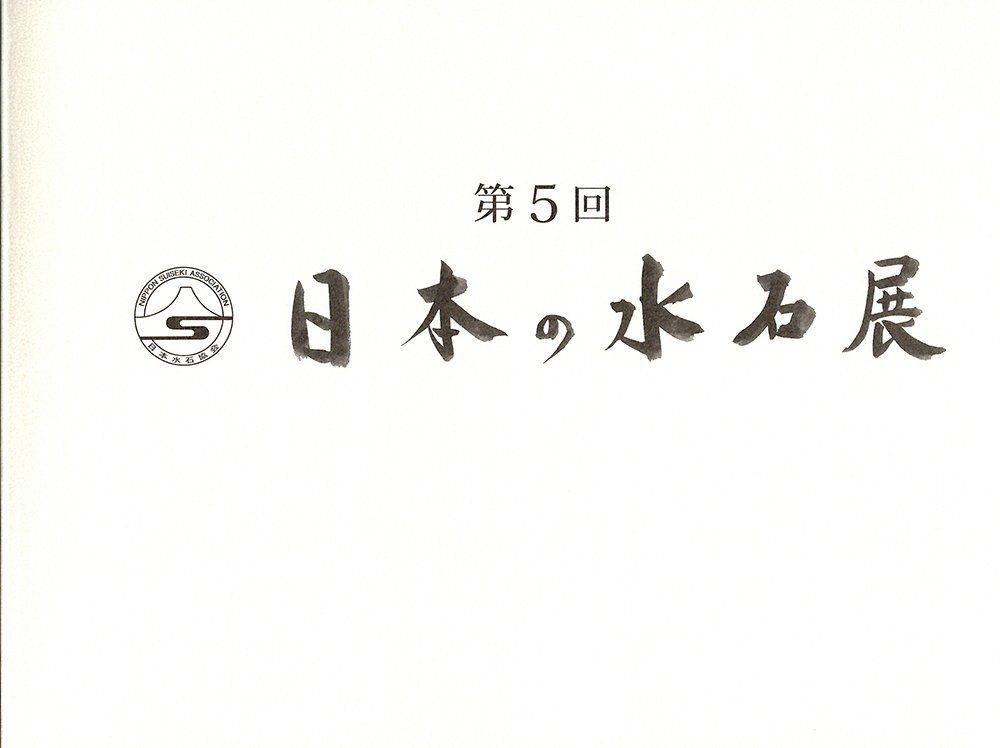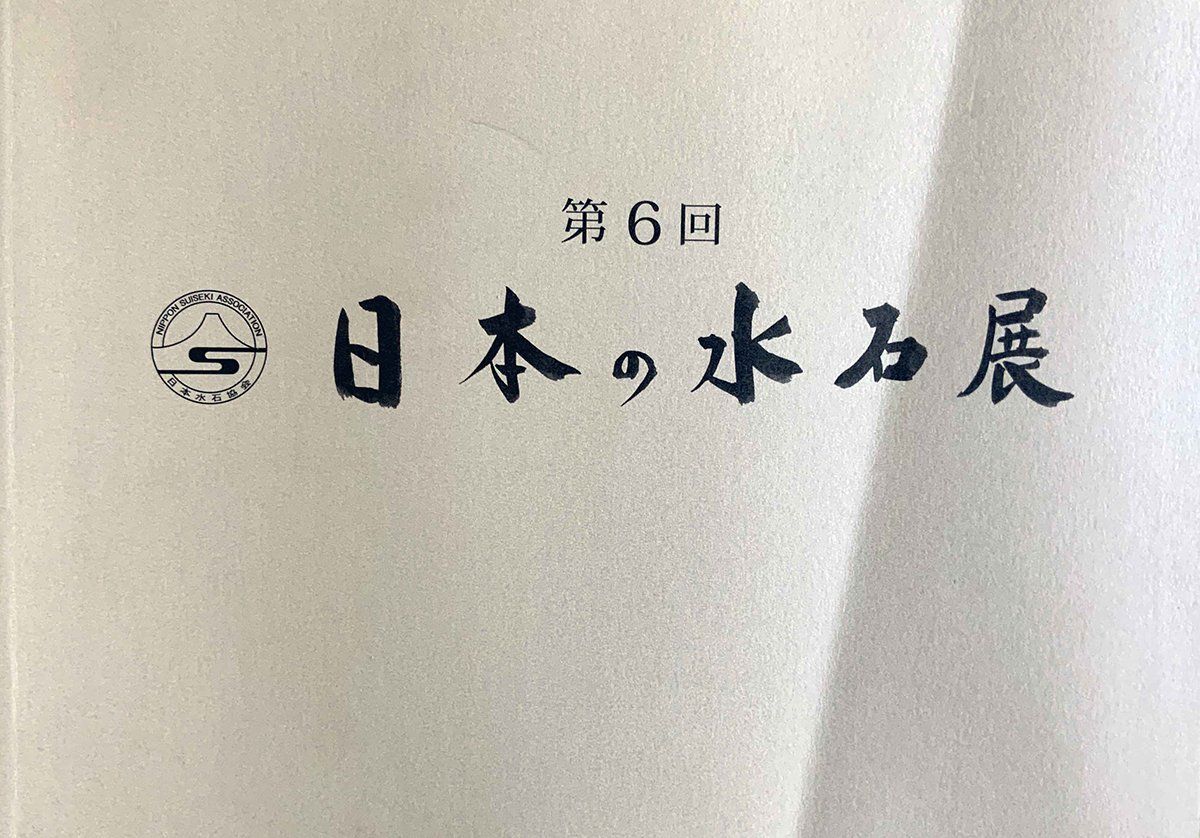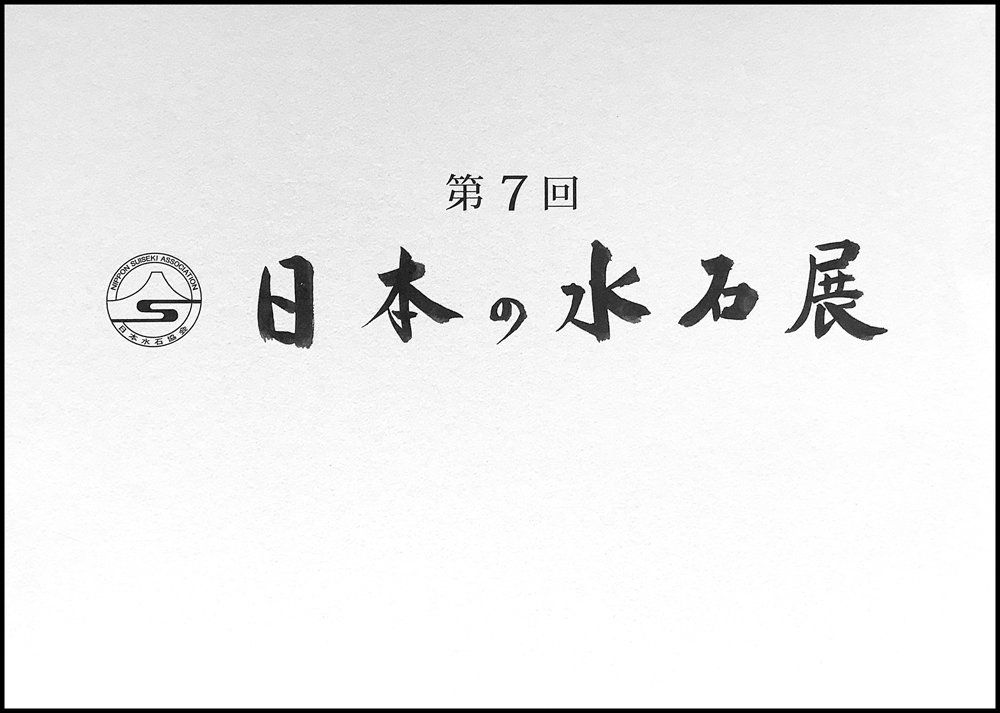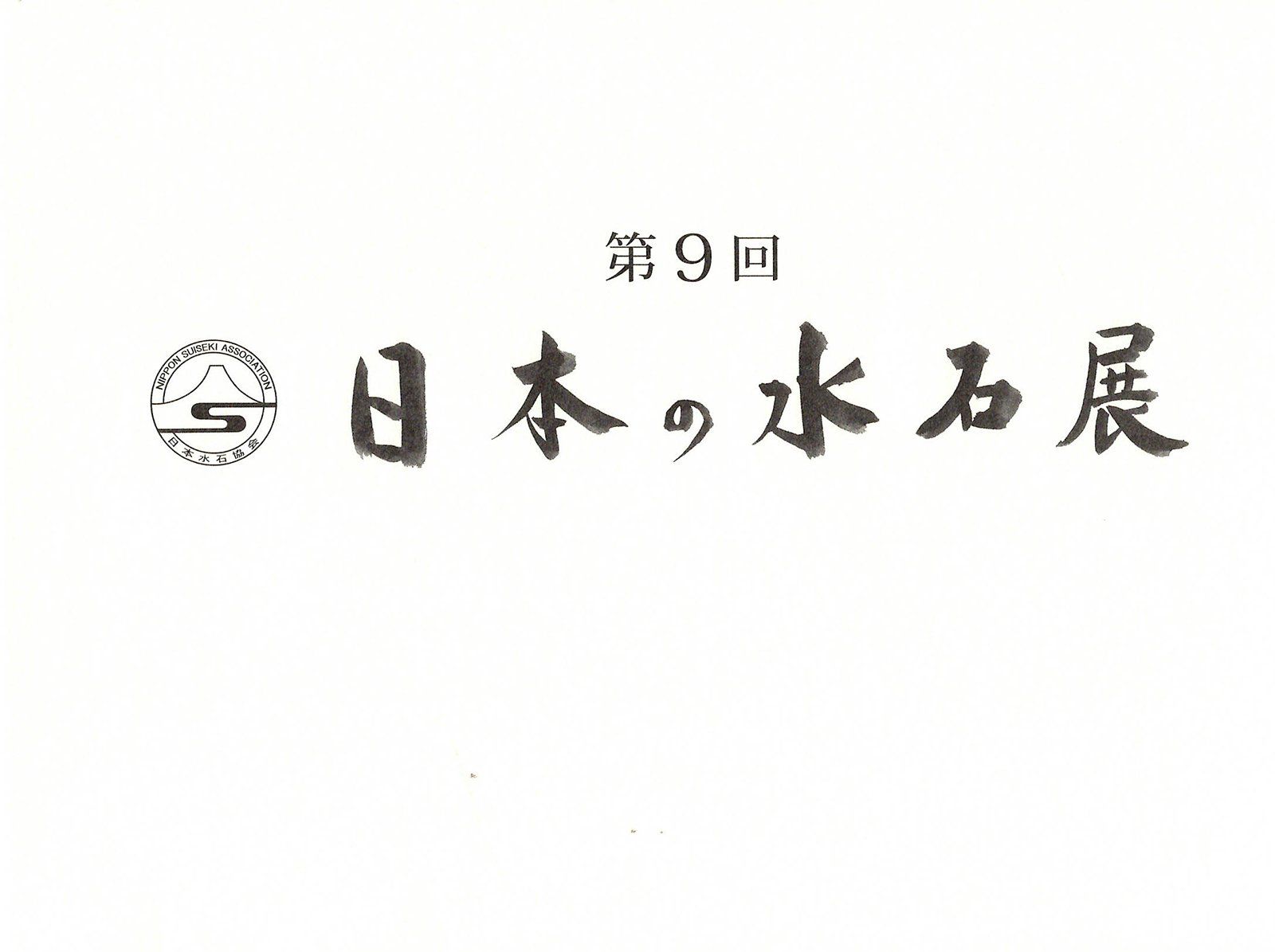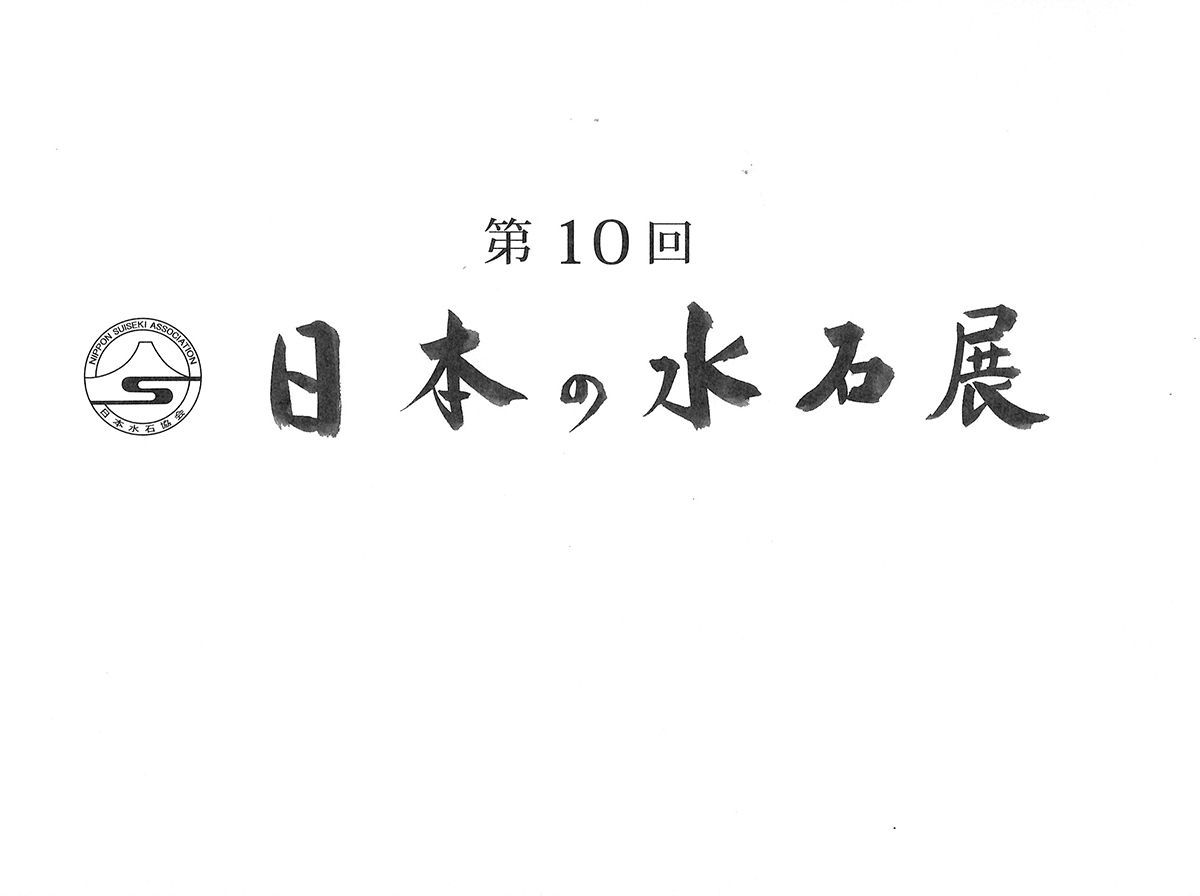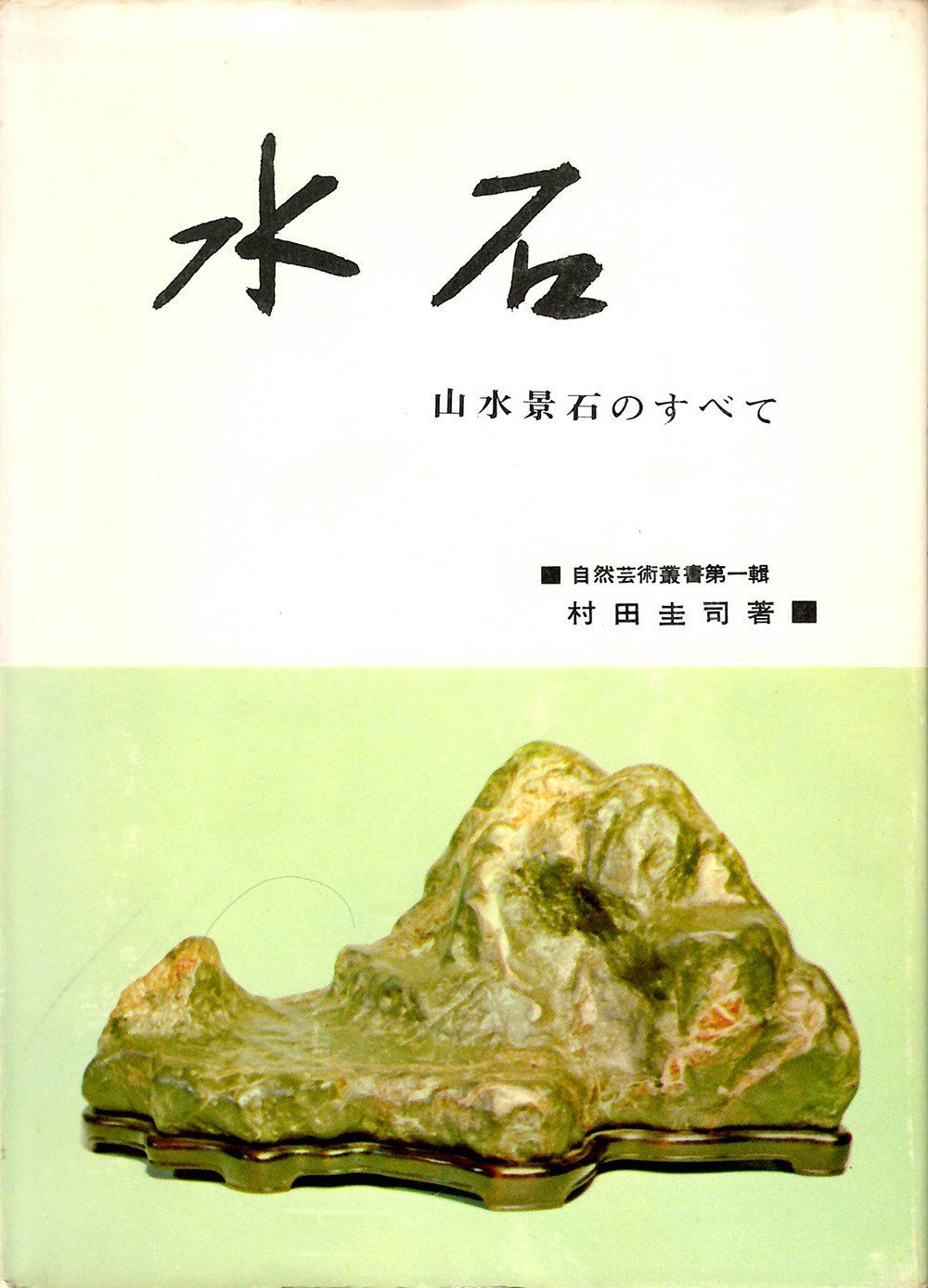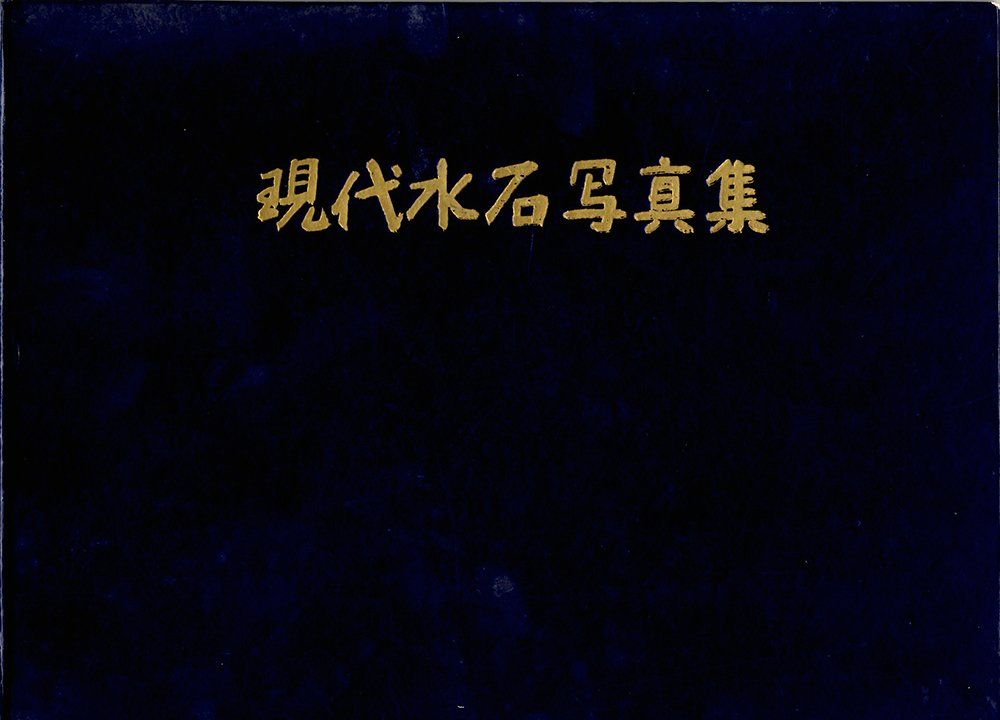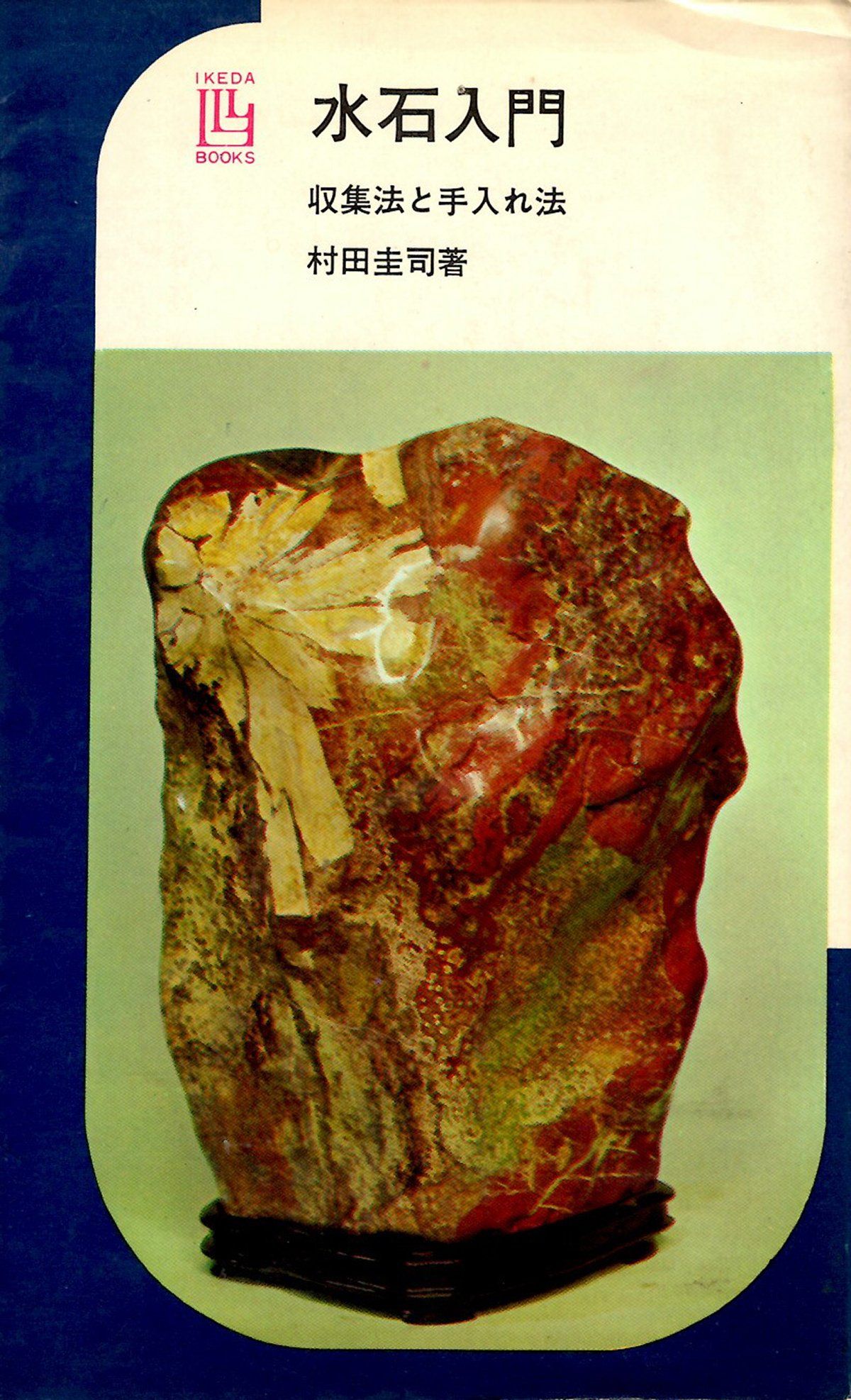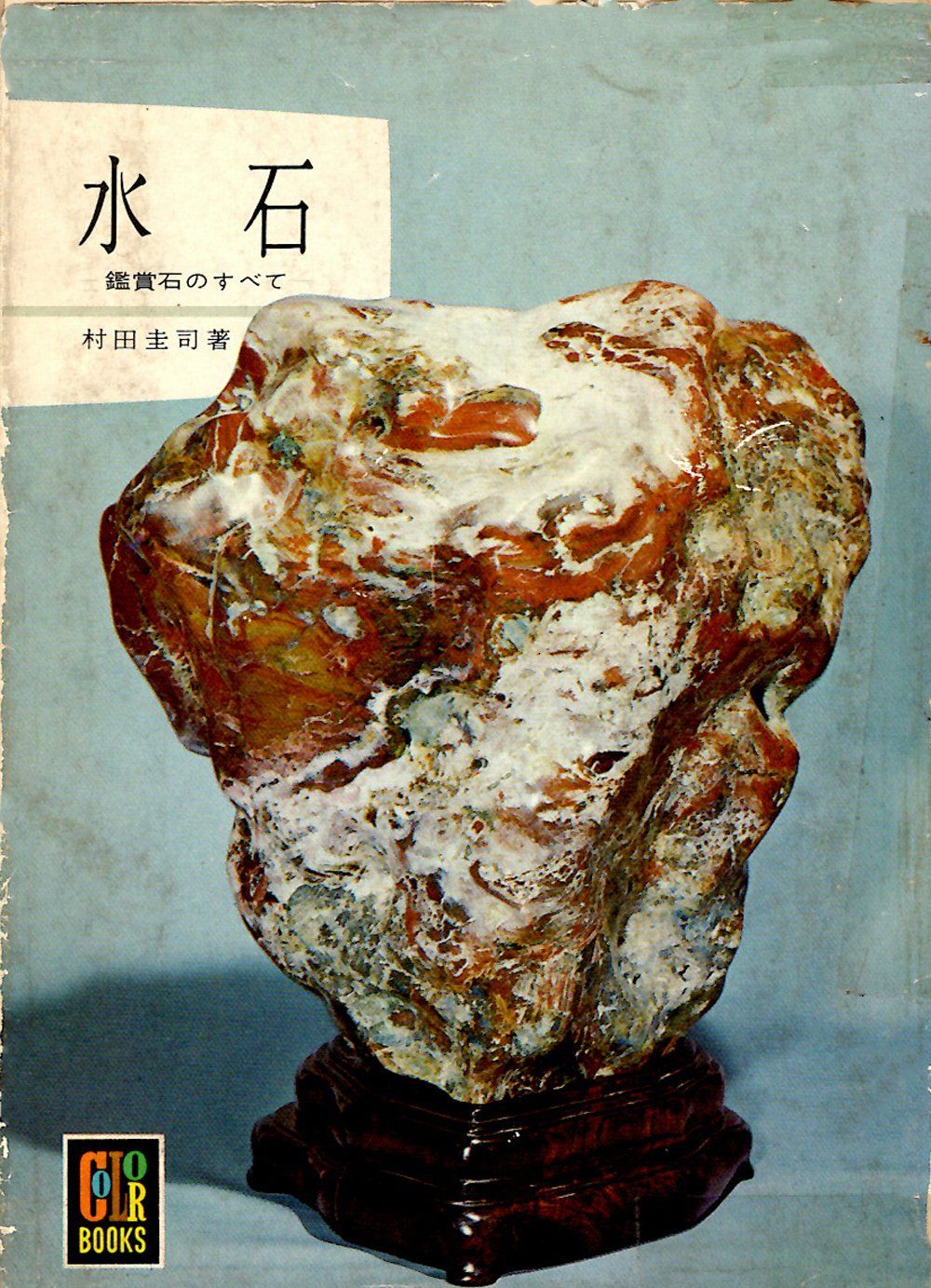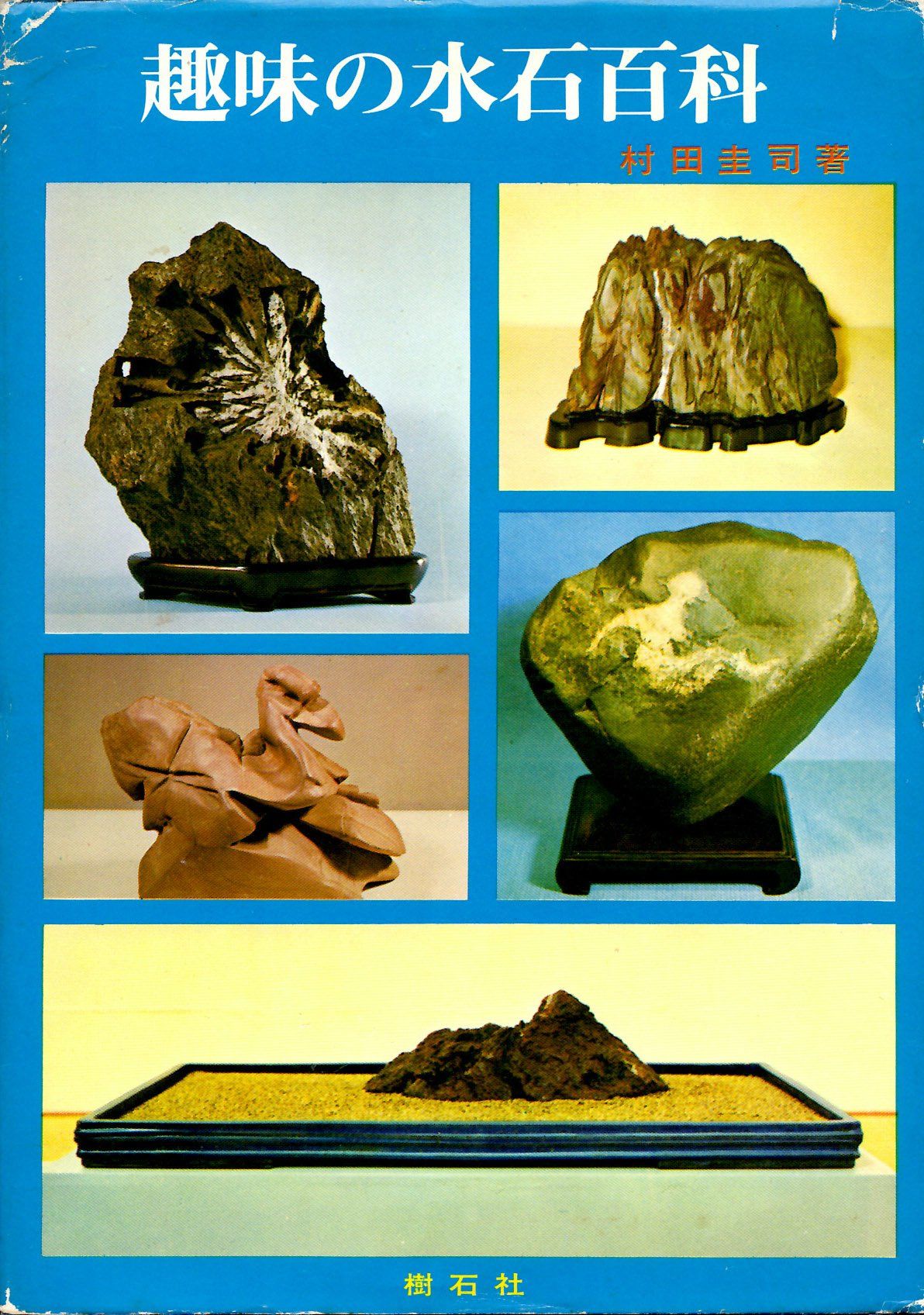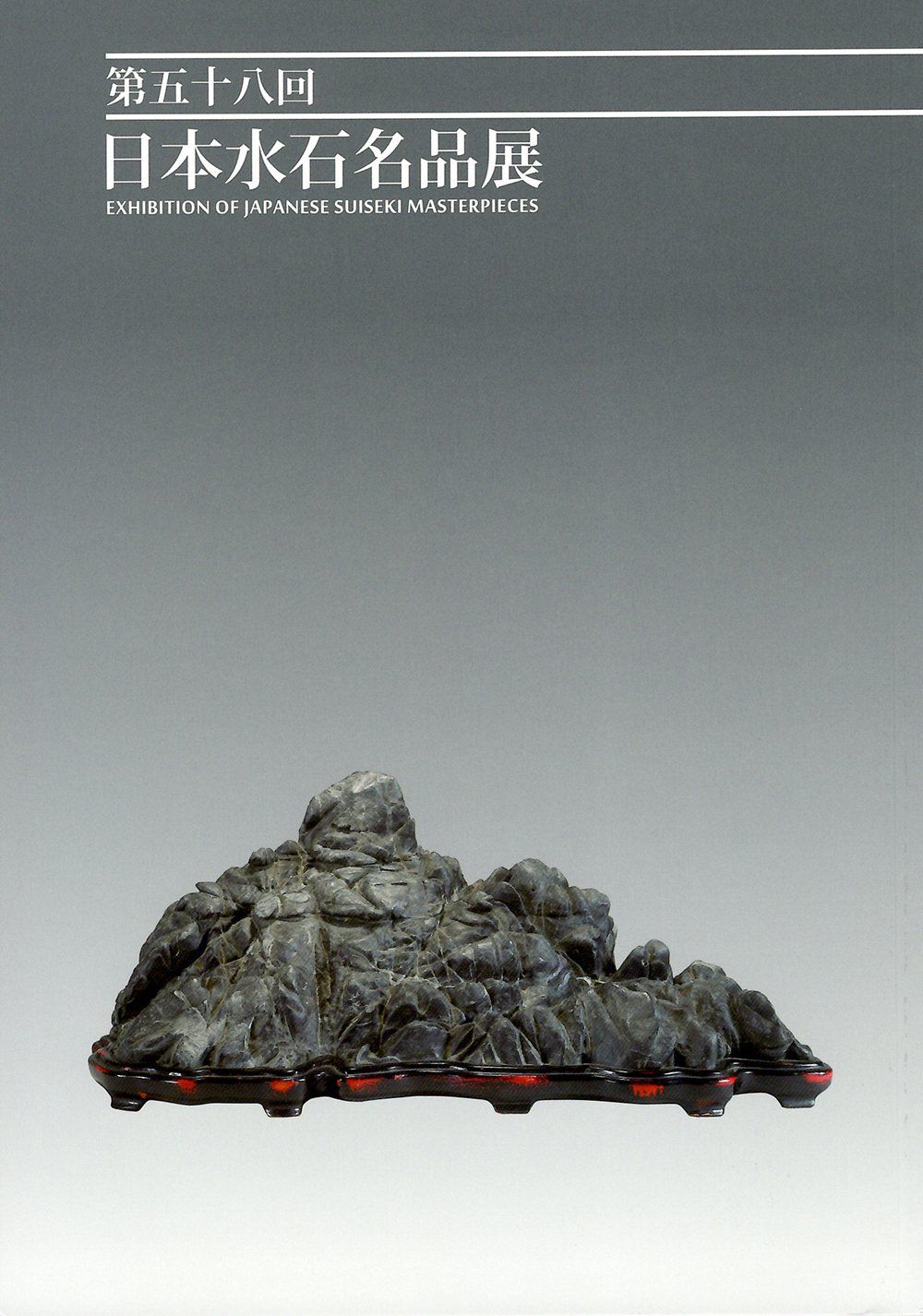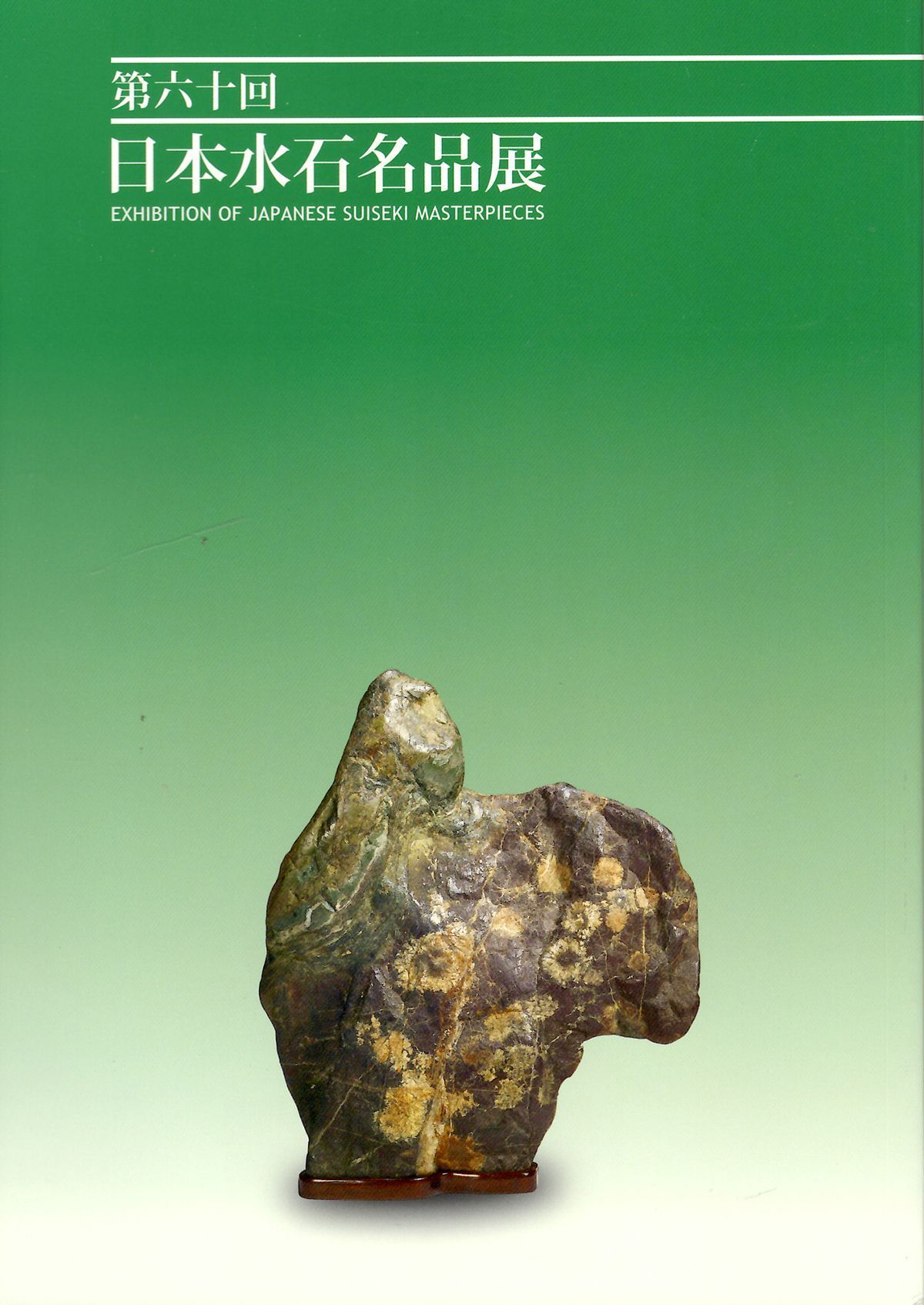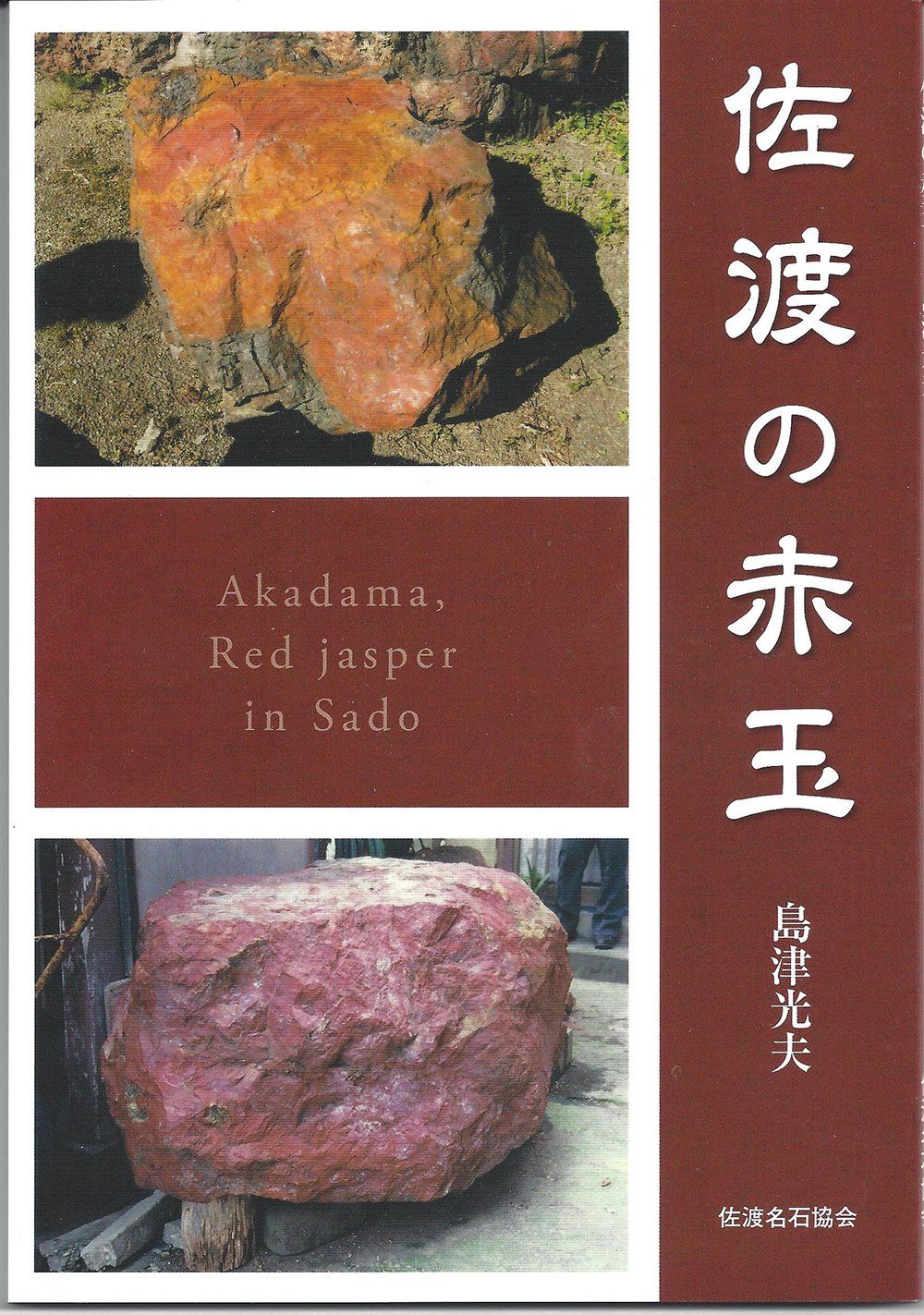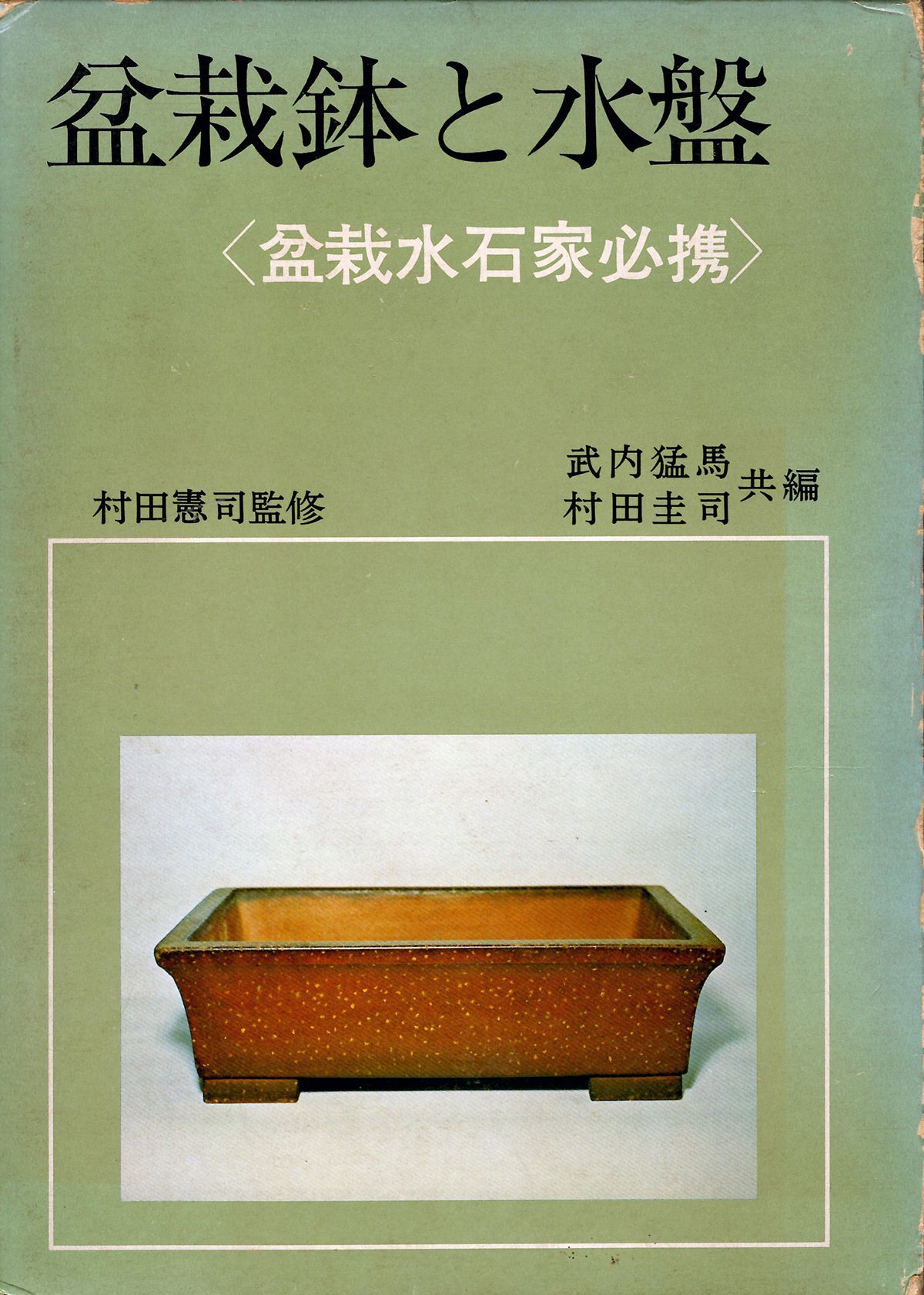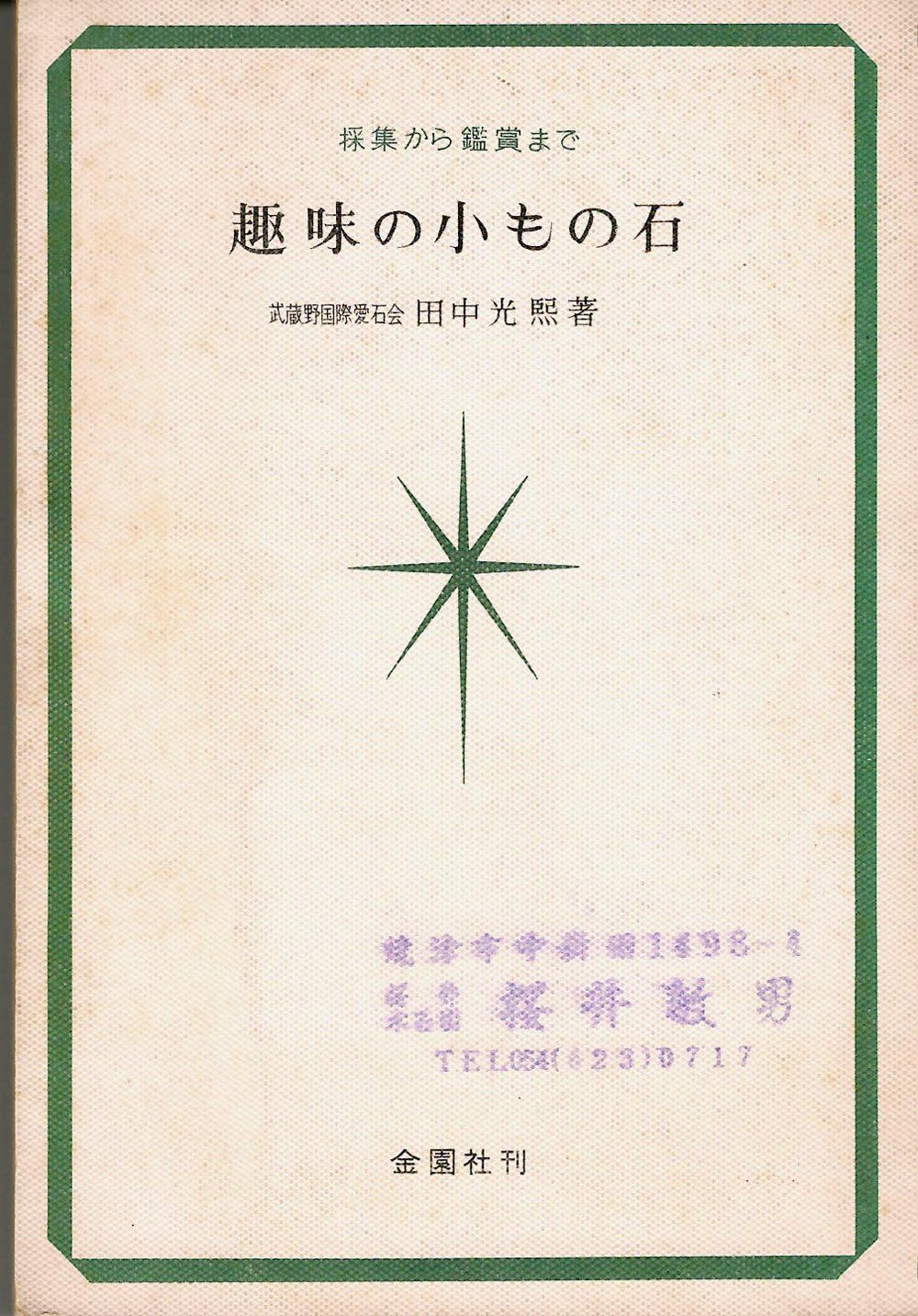JAPANESE BOOK REVIEWS
Aiseki
Rating: Very Good. An important window to the hobbyists’ side of Japanese suiseki.
This month we are featuring a Japanese serial publication rather than a book. Aiseki (Love of Stones) is closely allied with the All Japan Aiseki Association and provides an opportunity for the many Aiseki clubs to feature their exhibits and activities. Aiseki magazine unites the loose federation of hobbyists’ clubs throughout Japan. Outstanding stones from individual collections and stone hunting trips are frequently featured. In addition, individuals write articles on various topics relating to Japanese suiseki.
This monthly magazine in Japanese was first published in March 1983 under the title “Aiskei-no-tomo” (Friends of Aiseki). In 2006, the name of the magazine was changed to Aiseki. In the 1980s and 1990s, memberships were robust as thousands of hobbyists were pursuing suiseki in Japan. But a steady decline in clubs and people collecting and displaying stones resulted in a corresponding drop in Aiseki subscriptions. This is the last remaining monthly magazine devoted to suiseki in Japan. Subscriptions from other countries are welcome. Contact aiseki@watch.ocn.ne.jp if you would like to subscribe.
All Japan Juseki-kai 1966
Contemporary Aiseki Notation
All Japan Juseki-kai
ED. 1965
Stone Hunting as a Hobby (Kitaguni-no-ishi, Azuma-no-ishi)
Rating: Good, a valuable reference at the time, but now out-of-date and replaced by a more modern version.
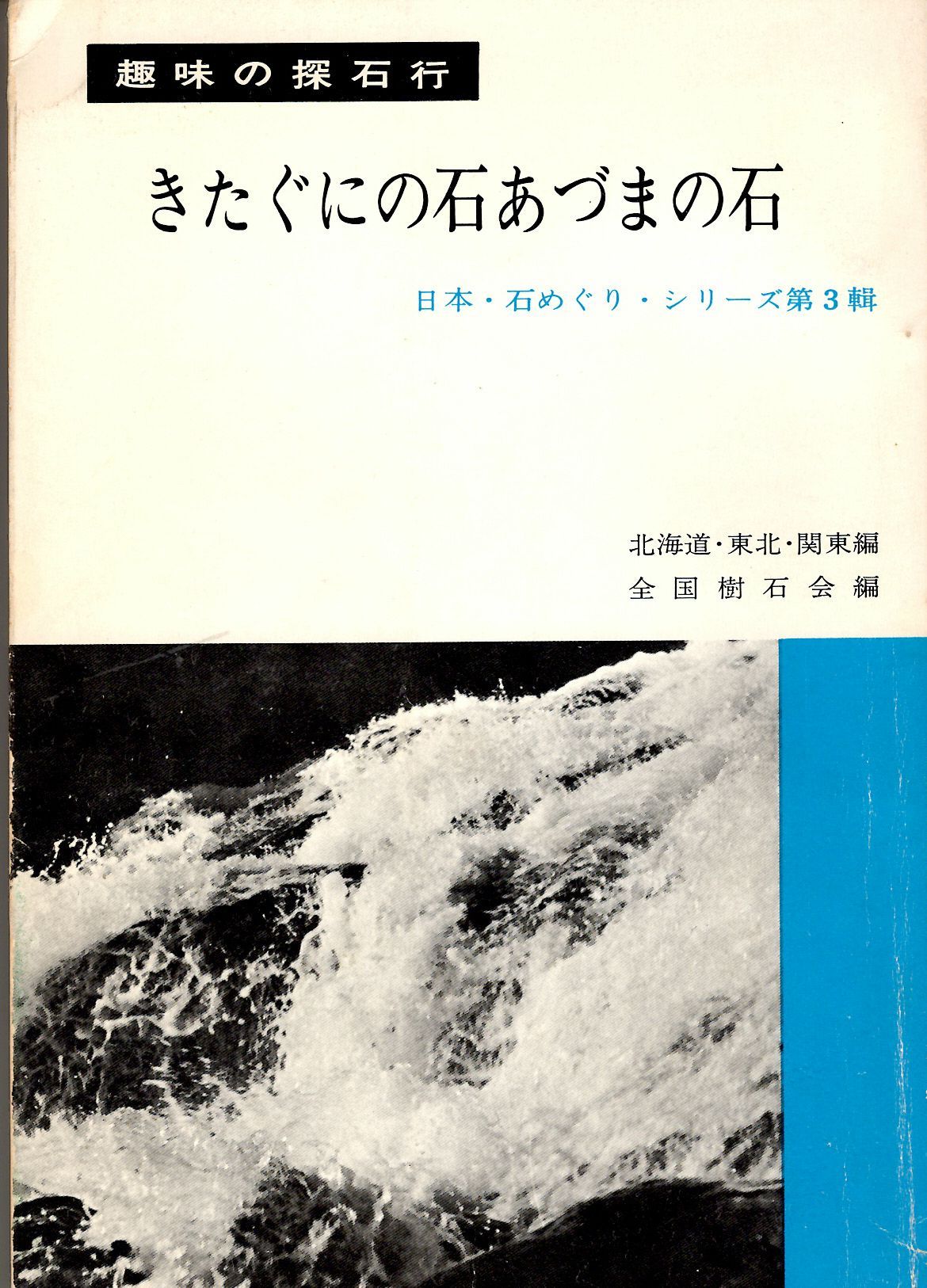
Japan Stone Visit Series #3, Hokkaido, Tohuku, and Kanto edition. Juseki-sha Publisher, Tokyo. 154 pages, No ISBN. 600 yen when published.
This is the third in a series of books to aid hobbyists in identifying good stone-hunting locations in Hokkaido and the northernmost region of Hanshu Island. It includes descriptions and maps of accessible areas in different rivers. This “where to go to find stones” volume was published during the rise in popularity of suiseki in Japan. At this time, and for the following two decades, thousands of Japanese began to learn and pursue the art of collecting and displaying interesting stones. Black and white photographs of the rivers and some of the stones found in those rivers complement the crude maps.
This series served as important guides to stone collecting sites throughout Japan until they were superceeded by the a three part series
Modern Japan Excellent Stones Illustrated published in 2010 (#1), 2014 (#2), and 2019 (#3).
All Nippon Aiseki Association 2014
All Nippon Aiseki Association 30th Anniversary Exhibit in Hokkaido
All Japan Aiseki Association 2018
38th All Japan Aiseki Association National and the 6th Hokkaido Suiseki Federation Combined Exhibition
Araki Hideici, 2010
History of Viewing Stones—People who Loved Stones
Ishi-no-bi-shi, Tokyo. No ISBN.
By Hiromi Nakaoji
This is a thin book of only 41 pages. It begins with a brief history of suiseki, and then introduces 31 historically known stones. Each of these stones is linked with a story of past owners. This book is very interesting since we can understand the stones and how they are related to the people who once owned them. There are other historical stone books in Japan, but the descriptions in the book seem more objective. This thin book is personable.
Rating: Highly recommended
Baba Toshikazu. 2002
Collection of One Hundred Selected Suiseki—For my 77th Birthday.
Nippon Bungei Company, 250 pages. No ISBN. 500 Yen when published.
By Hiromi Nakaoji
This book was published at the height of suiseki popularity in Japan. Murata Keiji served as an advisor and supervisor for this volume. This book was written for the beginners of suiseki when many other similar suiseki books were available. The book has 7 chapters covering the history, the difference between suiseki, biseki, chinseki; the forms/shapes of suiseki; how to appreciate suiseki; the meaning of suiseki collection; the preparation for stone hunting; and hunting sites in Japan. In this sense, this is a very comprehensive introduction beginners. What is more interesting in this book is the description of how to appreciate five specific types of suiseki: mountains, step, waterfall, hut, and abstract. Murata wrote that this book is a much better introductory suiseki book than he could write. This is a must-have book to understand Japanese suiseki at the beginning of its popularity.
Ishi, Kiuemon 1966
The Essence of Rocks
Ishihara, Noburo 1986
Kikka-seki
Ishihara, Nobuo 2000
World of Chrysanthemum Flower Stones
Ishihara Nobuo. 2022
Neo Chrysanthemum Flower Stones
Rating: Excellent, a valuable reference to Japanese Neo Valley chrysanthemum stone flowers.
Livre Publishing Company, Kochi, Japan. 132 pages. ISBN: 978-4-86338-340-1. 40,000 Yen when published.
The author, a resident of Osaka, is a well-known, long-time collector of Neo Valley chrysanthemum flower stones. Ishihara is a highly skilled stone carver who can expose and polish these stones to illustrate their best features with the least amount of alteration. As a result, he calls himself a chrysanthemum flower stone creator. He published two other books, including
Kikka-seki (1986), followed by
Kikka-seki no Sekai
(World of Chrysanthemum Stones) in 2000. Ishihara wrote a series of articles about these stones for the Japanese language magazine
Juseki
and played an important role in establishing a Neo Valley museum devoted to these stones.
This book contains information about the different mountains in Neo Valley where chrysanthemum flower stones are found. Ishihara also describes the various types of foundation stones and mineral formations--the “flowers.” He also provides descriptions of two chrysanthemum flower stone museums and the mum stone collections held by 15 collectors, including himself. This book, in many ways, summarizes what he has learned throughout his lifelong association with mum stones. This book can be used as a reference to identify the mountain from which a chrysanthemum flower stone originated.
Japan Bonsai Association. 1970
Bonsai Suiseki Show at Expo ’70
Rating: Excellent, a valuable reference for students interested in the evolution of Japanese bonsai and suiseki over the last five decades.
Japan Bonsai Association, Tokyo. 361 pages, no ISBN. In slipcase. 35.25 x 26 cm (14 x 10.2 inches) Out of Print, Current price in used book market in fine condition with slipcase is 28,000 to 30,000 Yen.
The Japan World Exposition, Osaka, 1970, was the first world fair to be held in Japan and the first of the modern expositions in Asia. It was an immensely successful event with 77 countries participating around the theme Progress and Harmony for Mankind, and attracting over 64 million visitors. This was an opportunity for Japan to show the world its arts, crafts, architecture, foods, customs, and industrial progress.
The Japan Bonsai Association staged one of Japan's largest public displays of excellent bonsai and susieki. Nearly 900 bonsai and 270 suiseki were displayed at the 1970 Expo in Osaka. These were the finest examples of the bonsai and stones at that time. This oversized volume is a compelling catalog of those trees and stones. It has become a valuable reference for serious students of these Japanese art forms.
This volume provides definite evidence to support the belief that both bonsai and suiseki display practices have been steadily changing or developing over time, especially if we compare the trees and stone in this volume with the bonsai and suiseki in the latest catalogs of the Kokiufu-ten and the Japan Suiseki Exhibition. Bonsai today are often larger in size, a greater number of trees with broadly spreading trunks as seen in many maples, and greater numbers of deep bending and carving to achieve a natural ancient tree appearance. The suiseki illustrated in this book shows a wider range of bases used to hold and orient stones than seen in today’s stone exhibitions. In display methods using trays, the ratio of the size of the stone to the size of the ceramic or metal tray has changed somewhat over the last fifty-three years.
Katayama, I 1986
Keido Katayama School Teaching Book 2
Katayama, Ichiu 1986
Tree Pots, Suiban and Selected Excellent Items
Kawawa, Seikichi 2012
“Michi”, Selected Suiseki Collection
Kiso, Shohichi (Owner of Mutai-an). 1903
Bonsai Heika Juraku-kai Illustrated Record. 2 vols.
Rating: Excellent, an important and valuable reference
Gisho-do publisher, Tokyo. Bound Japanese style and in a folding case with ivory clasps.
By Hiromi Nakaoji
This is a two-volume illustrated record of bonsai, potted flowers, pots, viewing stones, Sencha tea ceremony tools, and other antiques exhibited in 1903. The exhibition was held in restaurants in two locations, one in Tokyo and the other in Gunma. There is one volume for each location. It was common practice at that time to hold exhibitions of bonsai and accompanying objects in tokonoma-like settings in restaurants.
The Juraku-kai club was established in 1902 and staged four exhibits after its establishment. This is a record of their exhibits in 1903. Thirteen nurseries and ten hobbyists participated in the exhibit illustrated in these two volumes. Each display was well illustrated with a list of items in it.
We can tell from these volumes that bonsai and accompanying objects were already quite popular at late Meiji in Japan. This important book clearly shows the type and size of bonsai during this period. It also illustrates the use of viewing stones, especially Chinese stones with bonsai. Large upright flower arrangements seemed both popular and acceptable in the displays of this period. The inclusion of tea ceremony implements is an indication of the close ties between the appreciation of bonsai and the formal tea ceremony. These volumes are an important record of history and development of bonsai and stone appreciation in Japan. You can have access to these volumes via Japanese Diet Library .
website: https:www.ndlsearch.ndl.go.jp and type in 盆栽瓶花聚楽会図録
The author is cited as the Master of Mutai-an.
Matsuura, A & Yoshimura, K 1988
Excellent Japan Suiseki Grand View
Matsuura, Arishige 2010
An Introduction
to Suiseki
Rating: Rating, very good, a useful introduction but exceedingly overpriced.
Translated and adopted by Wil Lautenschlager. Privately published by Matsuura Arishige in cooperation with the Nippon Suiseki Association. Tokyo. 87 pages. No ISBN. Price when published $90.
Mr. Matsuura prepared this introduction to susieki based upon his experiences over many years as chairman of the Nippon Suiseki Association. During this time, he led the efforts each year to stage the annual Meihin-ten in the Meiji Shrine in Tokyo. Matsuura authored several important books on suiseki, and traveled and promoted suiseki in many countries.
An Introduction to Suiseki is an attractive and well-designed book that presents the basics of modern stone appreciation in a concise and well-illustrated manner. This book begins with a definition of suiseki followed by a brief history. The historical section emphasizes the early history of stone appreciation in Japan, while the important developments that occurred in the last 100 years are given cursory treatment.
Matsuura presents the five factors (shape, quality of material, color, surface texture, and age) with brief discussions of each. The common surface textures found among Japanese stones are illustrated, which is very helpful. In his discussion of age, Matsuura states that it is standard practice in other countries to oil and wax stones, but this practice is frowned upon in Japan. Here and elsewhere in this volume, Matsuura implies that suiseki are natural stones. He largely ignores the practice in Japan of enhancing stones by oiling and waxing.
A classification is presented to aid readers in understanding the meaning of different categories of stones. Students can easily learn the difference between the meaning of viewing stones and suiseki in Japan. A major section of the book is devoted to illustrating the ten most common types of suiseki in Japan. Examples of these include distant mountains, water pool, waterfall, and plateau stones.
Matsuura discusses the issue of cutting stones in this book. He acknowledges a long history of altering stones by cutting. The accepted practice of "to take is acceptable, to add is not" means that taking away some parts of a stone is acceptable, but not the shaping of stones. His states a preference for completely natural stones. The widespread acceptance of enhanced stones in Japan, especially stones that have been in collections for many decades, is not adequately discussed.
The steps in making a carved wooden base (daiza) for a stone are illustrated with a series of twelve photographs. This is followed by an important series of illustrations for the proper manner to store stones in wood boxes.
The chapter on elements of display is an excellent introduction for Western stone collectors to learn about the displaying stones. Ceramic and metal trays are illustrated together with a series of display tables. His inclusion of illustrations of small accessory items is also helpful, except for one questionable item. He writes that an oversized ceramic accessory is out of place and should not be used. "Such display may be more commonly seen in Chinese penjing practices but is not suitable for suiseki." Matsuura does not distinguish between the display of living trees and stones when he mentions "penjing practices." While the Chinese do use ceramic figures of appropriate scale in tree and landscape arrangements using living trees, they generally do not use ceramic figures in stone displays. This is more of a Japanese than Chinese custom.
The last section of the book explains and illustrates the importance of seasonality in the display of stones. Seasonality is an important element in the appreciation of stones and other objects in Japanese aesthetics.
The Meihinten Catalogs
Morimae, Seiji, 2001
The Retrospective Exhibit of Suifu Sanjin
Rating: Excellent. This is a fine, beautifully illustrated collection of outstanding artifacts associated with bonsai and suiseki.
Ginza Morimae LLC, Tokyo. 240 pages, no ISBN, no price given.
by Hiromi Nakaoji
This book was published as an exhibit photobook to commemorate the Suifu Sanjin Retrospective Exhibit held June 16 through July 2, 2000, at the Takagi Bonsai Museum in Tokyo. The exhibit included over 80 suiseki, 50 bonsai pots, 20 antique pots and suiban, as well as seal carvings from the Suifu collection. The book contains a thorough history of Suifu Sanjin whose real name was Usui Masashi (1921-1994), a bonsai & suiseki collector, bonsai pot maker, and seal carver. He was a member of Ichiu-kai, Katayama Ichiu's suiseki club. Suifu's most significant contribution to suiseki was his extensive and detailed box writing. Each time he purchased suiseki, he prepared a kiribako and did box writing of the stone's history and his impressions. His box writing was said to be reliable. Suifu made bonsai pots for his bonsai collection and made daiza for his suiseki. The book offers us an excellent opportunity to learn about a serious Japanese bonsai and suiseki collector. No ISBN was obtained since this is a private publication.
Nippon Suiseki Association, Tokyo. 207 pp. ISBN: none. 3000 Yen when published, (English translated by Wil Lautenschlager and Peter Warren)
This is the sixth exhibition catalog of the Japan Suiseki Exhibition staged by the Nippon Suiseki Association at the Tokyo Metropolitan Art Museum in February of each year. This annual exhibition has become the premier suiseki show in Japan. This year, the historically important stone, the Bonseki Sue no Matysuyama, was featured. This stone is believed to be traced from old tea ceremony records from the mid-1500s. It is a landscape stone that was displayed in an old bronze tray.
Morimae, S 2021
The Eighth Japanese Suiseki Exhibition
Rating: Excellent, tan important reference for enthusiasts of Japanese suiseki.
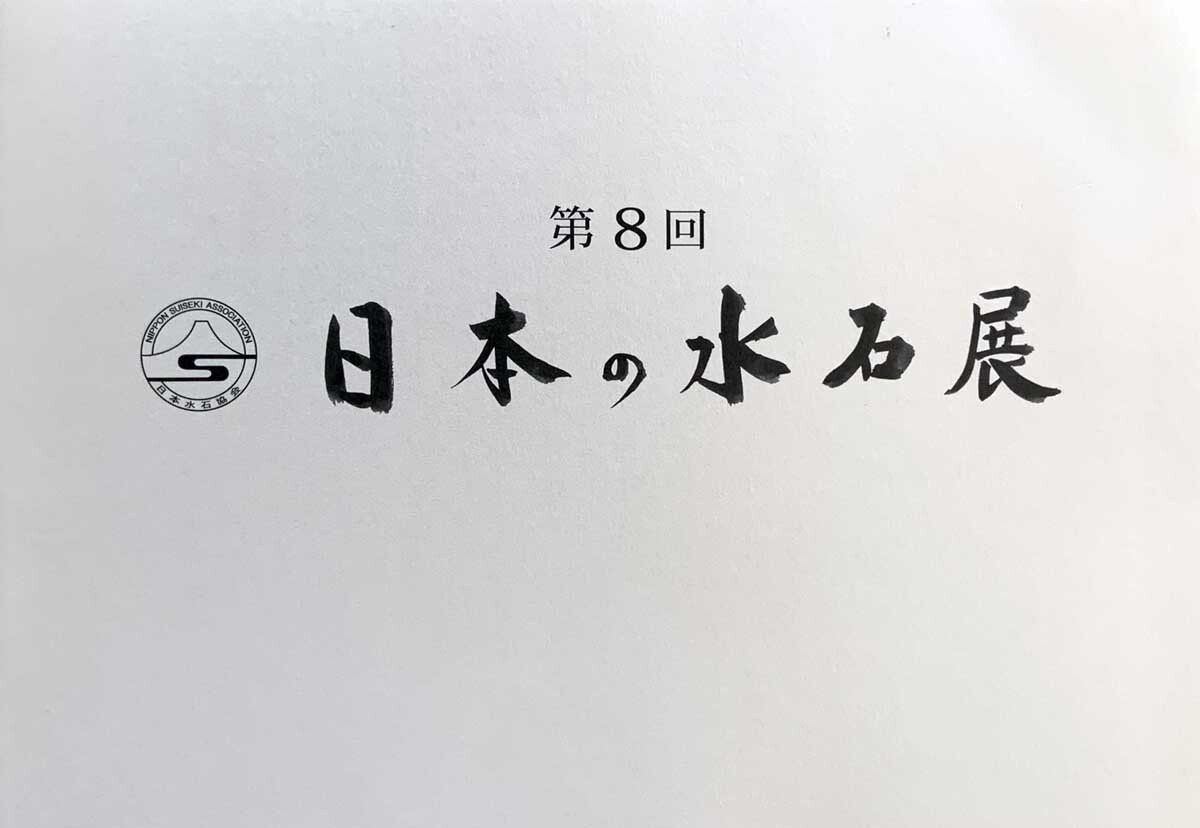
Nippon Suiseki Association, Tokyo. 232 pp. ISBN: none. 3000 Yen when published, (English translated by Wil Lautenschlager and Peter Warren)
On February 14-18, 2021, the Japan Suiseki Association (JSE) held its 8th annual exhibition in the Tokyo Metropolitan Art Museum in Ueno Park. This publication is the catalog of that exhibition. This has become the finest annual exhibition of viewing stones in Japan and sets the standards for suiseki enthusiasts. Unfortunately, foreign visitors could not attend the exhibition due to Covid-19 restrictions. This catalog is the only way for us to see the outstanding stones in the exhibit.
This year, the catalog is divided into special entries, tokonoma displays, and general entries. It is a soft-cover volume with a landscape format that best suits the mainly horizontal orientation of the exhibited stones.
Nippon Suiseki Association, Tokyo, 200 pages. ISBN: None. 3000 Yen when published (English translated by Wil Lautenschlager and Peter Warren).
On February 14-18, 2022, the Japan Suiseki Association (JSE) held its 9th annual exhibition in the Tokyo Metropolitan Art Museum in Ueno Park under the Covid pandemic restrictions. Few foreign visitors were able to see this exhibition in person. This publication is the catalog of that exhibition.
The catalog is divided into six sections: special entries, tokonoma displays, guest entry, general exhibits, entries from abroad, and a special exhibition. Combined, these sections present an excellent overview of the current status of Japanese suiseki. Studying this catalog and the preceding exhibition catalogs is a great way to learn about suiseki practices in Japan.
Nippon Suiseki Association, Tokyo. 208 pp. ISBN: none. 3000 Yen when published, (English translated by Wil Lautenschlager and Peter Warren)
This is the tenth exhibition catalog of the Japan Suiseki Exhibition (JSE) staged by the Nippon Suiseki Association at the Tokyo Metropolitan Art Museum February 14-18, 2023. This annual exhibition has become the premier suiseki show in Japan. This year, seven stones were selected as Special Entries, followed by seventeen stones in a Special Exhibit section. The latter stones were considered the greatest stones exhibited at the JSE since it began in 2012. This was in celebration of the 10th anniversary of the JSE.
Morimae Seiji. 2024.
The 61st Exhibition of Japanese Suiseki Masterpieces
Rating: Excellent, this catalog is a great way to learn about Japanese suiseki.
Nippon Suiseki Association, Inc. 183 pages, No ISBN. 30,000 Yen when published.
The publication of the 61st Exhibition of Japanese Suiseki Masterpieces (the Meihinten) marks a major change in this important, long-standing annual display of excellent viewing stones. The format has changed from the former and smaller vertically oriented catalog to a larger horizontal (landscape) format that is identical in design and layout to the past ten issues of the Japan Suiseki Exhibition catalogs. The Nippon Suiseki Association moved the Meihinten from its early summer venue at the Meiji Shrine to coincide with the annual Kokufu bonsai exhibition in February at the Tokyo Metropolitan Art Museum.
This volume is an exhibition catalog for their February 14-17, 2024 exhibition. The catalog is divided into six sections: Special Entries, followed by Special Exhibits, Tokonoma Displays, a single Guest Entry, General Exhibits, and lastly, Entries from Abroad. This is the largest and finest exhibit of Japanese Suiseki and viewing stones in Japan.
This is a soft cover volume with a landscape format that best suits the mainly horizontal orientation of the exhibited stones. The text is in Japanese and English.
Morimae Seiji, 2024
The 62nd
Exhibition of Japanese Suiseki Masterpieces
Rating: Excellent, another valuable reference from the Nippon Suiseki Association.
Nippon Suiseki Association, Tokyo. 216 pp. No ISBN. 3000 Yen when published. In Japanese and English.
The publication of the 62nd Exhibition of Japanese Suiseki Masterpieces (Meihinten) is an anticipated and welcomed event in the global viewing stone community. The Meihinten was held in June each year at the Meiji Shrine in Tokyo for several decades. Two years ago, this major exhibition was merged with the Japan Suiseki Exhibition held in February at the Tokyo Metropolitan Art Museum. The resulting combination continued using the Meihinten name. This is the finest and largest annual exhibition of viewing stones in Japan.
This volume is a catalog of their exhibition held February 14-18, 2025. The catalog is divided into six sections: Special Entries, Tokonoma Displays, a single Guest Entry, General Exhibits, Entries from Abroad, and lastly, a section of tokonoma displays from the Bonsai Museum in Saitama. There were 78 displays by Japanese collectors and 19 entries from foreign stone collectors. This year a special exhibit of 15 exceptional stones from the Okawa was included in this volume. This was a nice addition due to the superior quality of these stones which are rarely seen in a public display. The number of people participating in this major event is slowly declining. The exhibition at the Tokyo Metropolitan Art Museum ten years earlier (2015) had 127 people exhibiting stones as compared with 97 in this year’s event.
The limited text for the 2023 and 2024 tokonoma displays from the Saitama Bonsai Museum was in Japanese only and did not explain why this section was added to this catalog. The value of these displays would have been increased with a single introductory page in Japanese and English. This section appears to be a last-minute addition to this book.
Murata, Keiji Ed. 1962
Modern Suiseki Illustrated
Koju-en, Tokyo. 153 pp. No ISBN. 1500 Yen when published
The decade from 1960 to 1970 was the beginning of a rapid expansion of interest in Suiseki in Japan, as evidenced by the many guides and introductory books were published during this time. Kenji Murata edited and published two companion books—Modern Suiseki Illustrated in 1962 and a year later Modern Suiseki Photo Book. This volume served as a guide to hunting sites, mainly rivers, in Japan. The two volumes share the same format, size, and almost the same number of pages.
Three Touseki (Chinese stones) and five historical Japanese stones are illustrated prior to the introduction to this book. A two-page What is Sui Seki in English is provided by Keiji Murata. The remainder of the book is a guide to 35 collecting sites throughout Japan. A photograph of each site along with several stones from that site are provided for each of these 35 sites treated in the book.
Keiji Murata is listed as the editor and his father, Kenji Murata, as supervising editor. The two worked closely together to promote Suiseki in Japan.
Murata, Keiji Ed. 1966
How To Enjoy Suiseki Series
Ikeda Shoten, Tokyo. 259 pages, no ISBN, 350 Yen when published.
By Hiromo Nakaoji
This small handbook to introduce Suiseki to beginners is very comprehensive and thorough. This may be the reason that the then-famous Suiseki collectors such as Takahashi Teisuke, Kobayashi Soichi, and others commended this book in the preface. The book begins with a chapter on why we are attracted to stones in general terms. Then the book continues with ten more major sections, including the ABCs of suiseki, How to learn the appreciation of suiseki, The reality of collection, Stone hunting, Places of stone hunting, Introduction of collectors, and so forth. At the very end, this book has a list of stone clubs that were active when the book was published. This is a must-have book.
Murata, Kenji. Ed. 1966
Suiseki
Rating: Excellent, a valuable reference for serious students of Japanese stones.
Kimimi-sha publishing company. Tokyo. 163 pages, no ISBN. Large format 25.5 x 36 cm (10 x 14.2 inches). In Japanese.
By Hiromi Nakaoji
This book is one of the most beautiful and comprehensive suiseki books published in Japan in the 1960s. Thirteen people contributed short essays, including a calligrapher, an artist, a writer, the chief editor of a suiseki magazine, and other informed individuals. One of the articles written by Yoshimura Eiji includes his now well known "Law of Three Sides." Other topics covered in these essays include the joy of suiseki, the meaning of suiseki, standards for suiseki, bonseki, and the role of Rai Sankyo. This book photographs of famous Japanese stones, 18 are printed in color with another 40 susieki presented in black and white. Seventy-nine pages of photos of landscape stones, flower pattern stones, and figure stones follow the section on famous stones.
In summary, this volume gives you the mid-1960s concepts of the leading suiseki experts and offers a complete picture of the famous Japanese suiseki.
Murata, Kenji. Ed. 1969
Nippon Suiseki Meikan (Excellent Dictionary of Japanese Suiseki)
Juseki-sha, Tokyo. 136 pages. No ISBN. In slipcover. 2,500 yen when published.
by Hiromi Nakaoji
This book was published when suiseki was near the peak of its popularity in Japan. One hundred excellent stones were selected and featured in this volume. Some photographs are in color, while others are published in black and white. One of the famous chrysanthemum flower stones, Moon Light Mum, is included in this book. A few years later, the owner, Isazaki Tanekichi, gifted this stone to the US as part of the donation of bonsai and suiseki in celebration of the Bicentennial in 1976. This stone was displayed in the White House during President Gerald Ford’s visit with Japanese Emperor, Hirohitio.
In addition to the photographs of the stones, Murata wrote a chapter about the history of suiseki and stone appreciation, conditions of excellent stones, the limitations of working stones, Bunjin paintings and suiseki appreciation approaches, and warnings about displays.
Rating: Excellent; a valuable reference to learn about Suiseki.
Hoikusha Publishing Company, Osaka. 151 pp., no ISBN, 230 yen when published.
This small, inexpensive softcover volume is an introduction to the art of Japanese suiseki. This might be the first book a person would buy to gain a broad overview of the subject. Suiseki was published as collecting and displaying stones was gaining in popularity in Japan. It begins by illustrating different types of stones and where they occur. Brief information is included about collecting stones in nature and the basics of display methods.
This book has little to offer current suiseki enthusiasts in Japan and other countries.
Murata, Keiji Ed. 1974
The Beauty of Suiseki
Rating: Very Good, presents a new way of looking at suiseki.
Juseki, Tokyo. 202 pages. No ISBN. 6,500 Yen when published hardbound in slip case
by Hiromi Nakaoji
Murata Keiji was the leading proponent of suiseki in Japan during the 1960s through the 1980s. During this time, he wrote and edited many books on the practical aspects of collecting, displaying, and appreciating stones. This volume is more a reflection of his thoughts and ideas on the beauty of suiseki. Murata worked closely with an enthusiastic photographer, Adachi Hiroshi, who photographed many stones and then took close-up photos of different features of each stone. Murata then selected the ones to include in this book.
This volume begins with sixteen pages of color photographs of excellent suiseki that sets the stage for remaining materials. The majority of the contents is devoted to black and white photographs, first of an individual suiseki followed by close up shots of the prominent features of that rock. The intent is to encourage people to look carefully at all the features present in a stone and not just the overall impression. The black and white photographs do not come close to matching today’s standards in digital photography.
The book concludes with 20 pages of Murata’s thoughts on the origin of suiseki, literati hobby and suiseki, the world of poetic mountains and waters, conditions of excellent stones, and the aesthetic concepts of wabi and sabi.
Murata, Keiji. Ed. 1981
Suiseki, Poetic Sentiments of Mountains and Waters
Rating: Excellent, This book is a must for suiseki hobbyists.
174 pages, Juseki-sha. Tokyo. No ISBN. 2,000 Yen when published.
By Hiromi Nakaoji
This book is an extra issue to “Bonsai World,” a monthly magazine published by Murata. Murata opens this book with a statement that Bonsai and Suiseki are the hobbies of car wheels, meaning people love bonsai along with Suiseki and vice versa. Since his magazine Bonsai World attracted much attention to the suiseki-related articles and pictures, Murata decided to publish this book. This book presents over 240 photos of suiseki and related items. Next, Murata presented 11 chapters of how to enjoy suiseki, including display, suiban, tenpai, and the beauty of suiseki, in which he explains aesthetics of wabi and sabi. This is a very comprehensive book to understand suiseki written by the most respected authority in Japan at this time. Since 80% of the book are photos and illustrations, non-Japanese speaking people can enjoy the book. Eleven chapters of how to enjoy suiseki provide excellent information in understanding these stones.
Murata, Keiji & Maeda Susumu 1967
Biseki and Chinseki (Beautiful and Rare Stones)
Rating: not recommended.
Juseki-sha, Tokyo. 216 pages. 380 Yen when published.
This is the only book that is wholly devoted to biseki and chinseki. The authors provide definitions of these two broad categories of viewing stones and information about where these stones are found. The term chinseki was sometimes used to refer to Chinese stones in the late 1800s in Japan. Yet, in this volume, the authors use the term for rare and natural stones from Japan. Murata and Maeda define biseki as beautiful in color and pattern but also as polished stones. Chrysanthemum flower stones from Neo Valley and Plum flower stones from Kyushu are given as examples of chinseki. Polished chrysanthemum flower stones are considered as biseki in this book.
Biseki and Chinseki was published at the beginning of the suiseki boom in Japan and appears to be a hastily assembled book rather than a more scholarly work. While the book was designed to add a different perspective in viewing and categorizing suiseki, it creates confusion about what these terms represent.
Nippon Bonsai and Suiseki Meishin Taikei
Nippon Bonsai Association, Eds. 1986
Kodansha Publishing Company, Tokyo.12 volumes. ISBN: 06-19040-2. Large format.
The Japan Bonsai Association published a large format 36.4 x 25.7 cm (14.3 x 10.1 inches), twelve-volume illustrated book on bonsai and suiseki. This ambitious project has produced the most comprehensive set of large color photographs of the different types of bonsai and suiseki at the height of the popularity of these art forms in Japan. The Japanese words
Meishin Taikei
as “excellent item system” indicate the efforts to feature the best trees and stones of this time.
The first three volumes are devoted to Simpaku juniper bonsai. Volumes three through six covers all other types of bonsai except for shohin (volume 7) and Satsuki azaleas (volumes eight and nine). Volumes ten and eleven are devoted solely to viewing stones. The twelfth and final volume emphasizes appreciating and displaying these stylized trees and stones.
The stones illustrated in the two suiseki volumes were carefully selected and represent many outstanding stones. The photographs of each stone are large, allowing us to examine each stone in detail. More detailed information about each stone is given in the latter pages of the two volumes. The first of the two suiseki volumes contains background essays. The two main essays are The Heart of Suiseki by historian Naramoto Tatsuya followed by Stones I Love by Ohyabu Masataka. Five other shorter essays are provided but without author information. The volumes are nicely designed and produced with silk cloth hard covers.
These two volumes of excellent suiseki may have served as the precursor to the 1988 publication Excellent Japan Suiseki Grand View by Matsuura and Yoshimura and Historical Stones by Takahashi, also published in 1988.
Rating: Excellent, an important but hard-to-find reference on Japanese suiseki.
Nippon Suiseki Association 1998
Important Suiseki and Accessories Certified by the Nippon Suiseki Association I
Nippon Suiseki Association. 96 pp. Paper slip case. No ISBN number. 8,000 yen
Japanese stone appreciation culture grew steadily after the founding of the Nippon Suiseki Association (NSA) in May 1961. This was due, in part, to a plethora of new books and magazines that helped to popularize Japanese suiseki. This coincided with a long period of economic prosperity. Nearly four decades later, the number of stones in collections had grown considerably and many were being recognized as outstanding. The NSA began a project to certify important suiseki and accessory items. This volume was the first of three books to be published.
This is a photo album containing 164 illustrations, 144 plates of stones, 9 of display tables, and 11 of doban or suiban . There are two items displayed per page and each contains a brief description, dimensions, and name of the owner. This is a quality publication and the illustrations are sharp. It is an excellent book to study and learn what the NSA considers to be outstanding stones. All the stones illustrated in this volume are native Japanese stones. There is virtually no text other than captions; thus, non-Japanese reading audiences can easily benefit from this volume.
Nippon Suiseki Association 2001
Important Suiseki and Accessories Certified by the Nippon Suiseki Association II
Nippon Suiseki Association. 84 pp. Cloth slip case. No ISBN number. 8,000 Yen
This is the second in a series of books published by the Nippon Suiseki Association. It continues their undertaking to identify important stones and accessories in Japan. This volume extends the number of items from 164 in volume I to 294 designated in this second volume. This includes 25 trays, 7 tables, and 96 stones. In addition, there are twelve stones presented on the first pages that are given the designation of “especially important stones.” These appear to be ones held by institutions rather than individuals. The eight natural saba chrysanthemum stones indicates the importance of these stones in Japanese stone appreciation.
There is limited Japanese text. The book begins with one-half page of text in Japanese, and each photograph is accompanied by a brief caption to identify the name, type, dimensions, and owner. This is a quality hard bound book in a cloth slip case.
Nippon Suiseki Association 2011
Important Suiseki and Accessories Certified by the Nippon Suiseki Association III
Nippon Suiseki Association. 106 pages, No ISBN. 3000 Yen.
The latest Meihenten exhibition of Japanese Masterpiece Suiseki was held from June 3-7, 2023 at the Meiji Shrine in Tokyo and included outdoor and indoor displays of stones. The larger stones were displayed in an outdoor setting while the smaller stones displays were held in a large indoor room. This Shinto shrine is a major religious center and tourist attraction for its beautiful gardens. This year 67 stones were displayed including 9 stones exhibited by foreign stone collectors. The stone displays are beautifully illustrated, one per page.
In addition to documenting the Meihinten, this volume also includes three smaller exhibitions that were jointed sponsored by the Nippon Suiseki Association and the Omiya Bonsai Art Museum in Saitama City. The exhibits in 2019, 2021, and 2022 in the museum were open for a month, and each consisted of two sessions to permit more stones to be displayed. No exhibit was held in 2020 due to the Covid pandemic. The tokonoma in the museum were used for the exhibited,
Mountain and Water Cool Landscapes, of selected landscape stones.
Ohishi, Tanseki 1976
Kamogawa Stones of Kyoto Illustrated
Onuki Chuzo, 1967
Suiseki
Rating: Excellent, an important reference to understand Japanese suiseki in the 1960s.
Kyuryudo, Co. Ltd, Tokyo. No ISBN and unpaginated. 34 x 26 cm, 8 lbs, 8.3 oz with the slipcover.
By Hiromi Nakaoji
This massive, oversized book was written by Onuki Chuzo, a prominent suiseki collector in the 1950s and 1960s. He collected suiseki for many years and wanted to publish a book featuring his collection of stones to illustrate his insight and understanding of suiseki. He was successful in accomplishing his task. This book contains three short essays at the beginning, including a preface by Tanikawa Tetsuzo, an essay by the famous painter Higashiyama Kaii, and one by Tsuya Hiromichi, Professor Emeritus of Geology at Tokyo University. These essays are in both Japanese and English, as are his descriptions of 116 stones. A colored plate is included for each stone with the descriptive information on the facing page. Many but not all the stones illustrated in this book are from his collection.
Seven essays follow the illustrations and the description of the stones. Some of the essays are Onuki’s thoughts on suiseki. One of the articles is a history of suiseki by Murata Kenji, the leader in Japanese suiseki at that time. Only two of the seven articles are not accompanied by an English translation—Appreciation of Suiseki by Yoshimura Eiji and Trends of the Suiseki World by Murata Kenji. It is rare to see a Japanese suiseki publication from the 1960s with an English translation. This is a must-have book for all the suiseki hobbyists who prefer to read in English. The original price was 9,000 yen. You may find it online at Japanese used book sites at $150-180 excluding shipping cost.
Saito, Hiromu. 2024
Stones, Grasses, and Flowers of Four Seasons
by Hiromi Nakaoji
Rating: very good, recommended
Privately published. 120 pages. No ISBN.
Mr. Saito, a longtime collector of stones, developed a keen sense of display in the Japanese tradition. This book was based upon articles and images that he published in the monthly Japanese language magazine Aiseki from November 2019 to December 2023. Mr. Tatehata Kengo, the chief editor of Aiseki magazine, happed to see Saito’s Instagram and he was impressed by the quality of Saito’s display. Saito began using Instagram to communicate with his daughter who lived in New Zealand to make sure his life would be fine after his wife passed. Mr. Tatehata asked Saito to write an article for his monthly magazine. This is how things started. Saito wrote 50 articles in the magazine to the end. After Saito finished the magazine articles, he decided to make a book out of those articles he wrote. Now we can enjoy his book of displays and short essays.
This book is about Saito, and his way of enjoying life with stones, plants, scrolls, and other items in his everyday life. Saito began Bonsai over 50 years ago. He entered his bonsai to Kokufu and he won two awards. He began his interest in stones over 20 years ago when he first went to stone hunting at Mizunashi River in Niigata. He found a wonderful Hakkaisan stone with a beginner’s luck (See page 16 in his book). This finding motivated him to be more into stones. Saito’s displays are very beautiful and delightful. He has developed his own way of displays without referencing Katayama’s School of Keido. We can understand his excellent sense of beautiful displays in the numerous arrangements presented in this volume. This book presents very practical ways to learn about the Japanese display of stones and their companions. It is a delightful book to view and learn from the many fine illustrations, even if you are not fluent in Japanese.
Sapporo Aiseki-kai Association, 2021
The 23th Sapporo Aiseki-kai Exhibition, October 9 & 10
Rating: Very good, continuing documentation of the stones of Hokkaido
Sapporo Aiseki-kai Association. 44 pages, No ISBN.
This exhibition of thirty-five stones was held at the Sapporo Citizens’ Gallery. Normally, many more stones are displayed at this annual event because stone clubs throughout Hokkaido participate. However, the pandemic disrupted the normal pattern of activities on this northern-most major island in Japan. Hokkaido is well known for its black basaltic Kamuikotan stones from the Ishikari River, the striking Kotaro stones from the interior mountains in North Central Hokkaido, and the scenic Pompera stones from the northern coastal regions.
The majority of the stones in this exhibit—thirty-two out of thirty-five—are from Hokkaido. The hard, dark black stones from the Kamuikotan region continue to dominate exhibitions due to their striking features. The more rugged subdued reddish Kotaro stones add diversity and additional appeal. We applaud the Sapporo Aiseki-kai clubs for producing this volume in these trying pandemic circumstances.
Sasaki, Ken-ichi. Ed. 2010
Asian Aesthetics
Rating: This is a good starting point for those wishing to learn about Asian aesthetics. From here, you can pursue more in-depth studies in each of these areas.
Kyoto University Press. Kyoto, Japan. 309 pages. ISBN 978-4-87698-1.
The path to becoming a viewing stone connoisseur is not an easy route. The practice of collecting and appreciating unusual and beautiful stones originated in China and spread to Korea and Japan where it was adapted to the cultures of those counties. Therefore, it is necessary to develop an even rudimentary understanding of Asian aesthetics if a collector is to advance. Most stone collectors in non-Asian countries have heard of the Japanese aesthetic terms Wabi and Sabi and a few other Japanese terms. But, they have little understanding beyond that of the aesthetic concepts in China, Korea, India, and other Asian countries or how those concepts have changed over time. I found this book to be more helpful than other books and much of the Information on the Internet. Sasaki Ken-ichi, the editor, is a Professor of Aesthetics at Nihon University in Tokyo and a Professor Emeritus at the University of Tokyo. He assembled a team of scholars to examine the artistic traditions in different Asian countries and published their findings in this volume. The book is divided into five sections—Japanese, Korean, Chinese, Indian, and Southeast Asian aesthetics.
Sato, Kanseki 2010
Introduction of the Way of Stones: Joy of Stones
Sen-En-Kyo 2005 and 2007
Suiseki, An Art Created by Nature. The Nyogakuan Collection of Japanese Viewing Stones Vol. I and II
Shizuoka Prefecture Western Suiseki Federation, 1987
Mikura-ishi Illustrated. Excellent Stones of Enshu
Shizuoka. 102 pp. No ISBN. Hardbound with a slipcover.
Mikura stones are removed from the soil in hills in Mori Town in western Shizuoka Prefecture. There are different morphological types of stones found in Enshu, the old name for Shizuoka.
Rounded ball-shaped stones, either entire or in varying degrees of decomposition, are the best-known stone types found here. Some scenic landscape stones originating here closely resemble Furya stones from Wakayama Prefecture. This region also has produced nice object and pattern stones. Mukura stones are cleaned before they are suitable for display as suiseki.
This small volume is for serious students and collectors of Japanese suiseki. The photographs are black and white.
Rating: Very Good, a valuable reference for the stones from western Shizuoka Prefecture
Shunkaen Bonsai Museum, 2022
The World of Bonsai Artist Kunio Kobayashi
Rating: Excellent, an important reference for students of Japanese Suiseki.
Woman Press. Tokyo. 323 pages. ISBN: 978-4-434-30825-3. 15,000 yen when published.
This lavish and beautifully produced volume is the third and final in a series of books that Kobayashi planned to produce. After five decades of study and work with bonsai and suiseki, he wanted his series of books to preserve what he had learned about these art forms and to promote the Keido style of display. It is a book filled with emotion, beauty, and the refined sense of aesthetics found the Japanese bonsai world.
The book’s heart consists of five chapters—Bonsai and Suiseki are Two Halves that Make a Whole; Bonsai; Suisek; Suiban; and Shouku-Tenkei. Kobayashi is a strong advocate for the close relationship between trees and stones. He believe that bonsai and suiseki are two wheels through which one can experience the finest tokonoma displays and sekikarzi (stone displays). The first chapter begins with a discussion in Chinese, Japanese, and English of a prized stone that is the extreme art of allusion. This is an important example and concept for all of us to study. He then presents and elaborates in three languages the Special Entries from each of the first nine Japan Suiseki Exhibitions held in the Metropolitan Museum of Art.
The exquisitely photographed section on bonsai, mainly Shimpaku junipers, reinforces Kobayashi’s belief that bonsai are an expression of life. When properly displayed in a tokonoma, the trees emanate the unique Japanese expression of beauty.
Suzuki, Tsutomu Ed. 1979
Traditional Beauty: Bonsai and Suiseki. Sekai-bunka-sha
Rating: Excellent, a valuable, richly illustrated book on bonsai and suiseki.
Tokyo. 299 page, large format 26 x 36.5 cm. No ISBN. 13,000 Yen when published.
By Hiromi Nakaoji
We believe the editor of this book was the president of the Sekai-bunka-sha, a publishing company in Tokyo. He is not well-known in bonsai and suiseki, however, he developed this volume with guidance from major bonsai and suiseki leaders such as Murata Kyuzo, Murata Kenji, Katayama Teiich, and others. As a result, this book is one of the best guides to understanding Japanese bonsai and suiseki. The book consists of two sections; bonsai and suiseki. There are over 400 photographs of excellent bonsai and suiseki. In addition to the photos, this book has descriptions on the shape of the trees, the production site of suiseki, tokonoma displays of 74 bonsai, and the cultural history of bonsai and suiseki. It is a must-have book for serious collectors of suiseki and viewing stones. The original price of the book is 13,000 yen ($130). Now you can find some used copies of this book on the Japanese website
www.kosho.or.jp with a price range of $30-50.
Takahashi, T. 1988
Historical Stones
Takama, S & Kobayashi, S 1963
Illustrated Ibi River Stones
Juseki-sha, Tokyo. No ISBN. 222 pages. 3000 Yen when published.
By Hiromi Nakaoji
This is a very comprehensive book for bonsai and suiseki hobbyists since the book deals with both bonsai pots and suiseki suiban. Over 30 wonderful pots are introduced in color. Takeuchi’s chapter on bonsai pots includes the history, shape, and suggestions for pairing bonsai and pots. In the following chapter, Murata discusses suiban and how to use them. He includes a brief history of suiban, types of suiban, and how to match the color and seasonality. The book lists over 30 active potters at the time of publication. This important volume summarizes the use of bonsai pots and suiban in Japan concisely but thoroughly. It is a must-have book for understanding suiban and its use in Japanese stone appreciation practices.
Kin’en-sha, Tokyo. 313 pp., no ISBN. 380 Yen when published.
This book was published at the height of the suiseki hobby in Japan. Tanaka, the author, was a member of Musashino International Aiseki-kai. This fact tells us that suiseki hobbyists were very active at that time. Tanaka focused on small stones in this book. He defines small suiseki as having a width of 15-30 cm. Tanaka recognizes smaller categories such as “Shojo-seki” or palm-size, and “Mame suiseki,” the smallest size.
In addition to the size of the stone, this book covers all aspects of suiseki. This includes a brief history, types of suiseki, how to collect small suiseki, how to go stone hunting, Japan’s stone hunting sites, daiza & suiban, polishing & cutting stones, and geology for stone hobbyists. It is impressive to find a book written by a hobbyist that covers so many aspects of the suiseki hobby.
Tanimoto, H & Murata Keiji 1969
Furuya Famous Stones, Comprehensive Illustrations
Tanokami, Takashi & Umahashi, Tomohisa 2002
Regarding Suiseki
Tatehata, Kengo Ed. 2010
Modern Japanese Excellent Stones Illustrated. Volume I
Tatehata, Kengo 2014
Modern Japan Excellent Stones Illustrated II
Tatehata, Kengo Ed. 2019
Modern Japan Excellent Stones Illustrated III
Toki-ishi Aiko-Kai 2012
Toki-Ishi: The World of Beauty. Volume Six
Toki-ishi Enthusiasts Club. Wind and Snow of Toki
Tokuma Bookstore 1964
Original Color Japan Suiseki Directory
Wako Kiku-seki Center, Ed. 1974
Chrysanthemum Stones & Peacock Stones: Directory
Yamazaki, Akira 1940
Kiku-ishi
Yoshida B 2014
Beauty and Heart of Stones
Yuan, Sekijo 2018
Yuan’s Suiseki 1
Rating: Not recommended, of limited value

